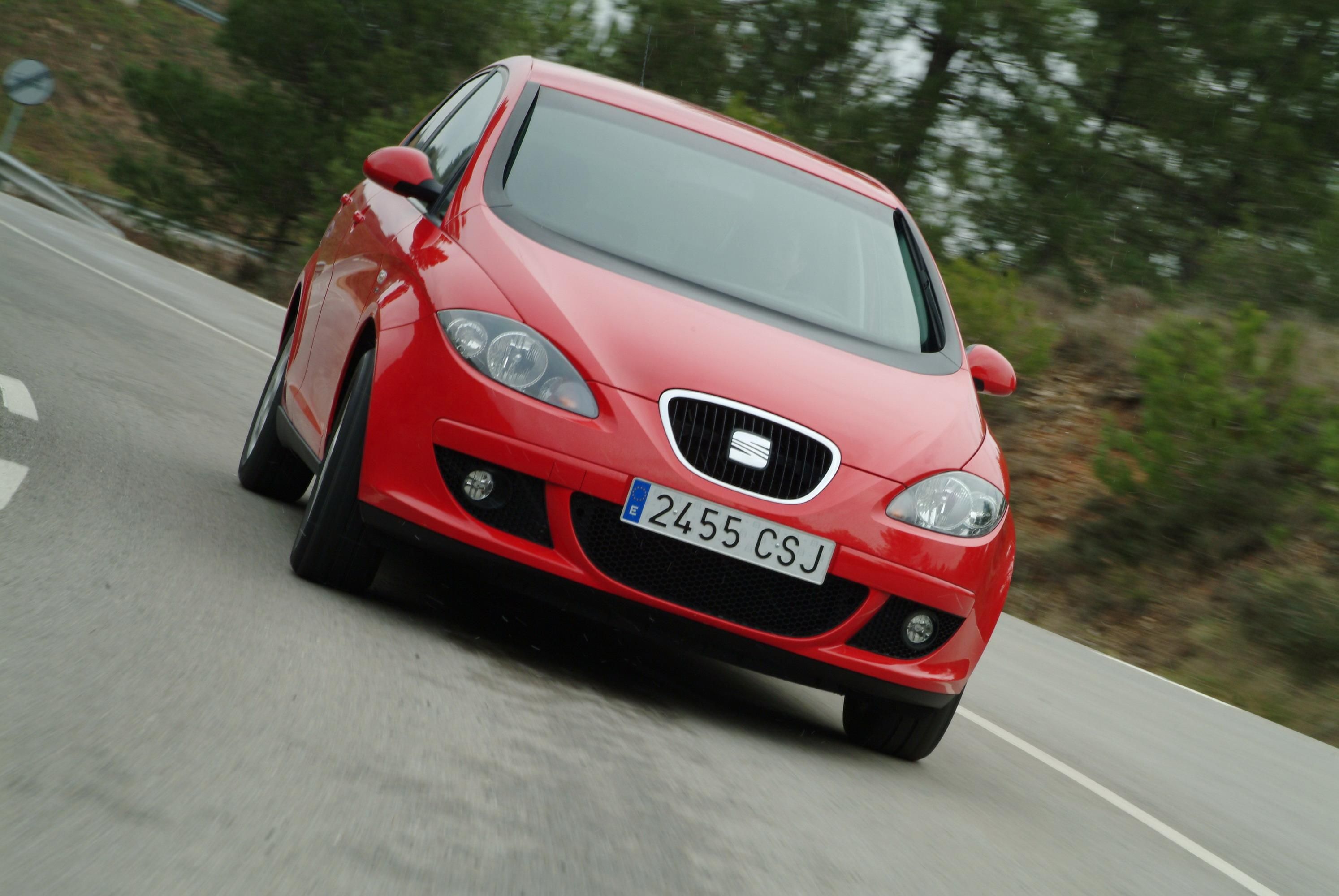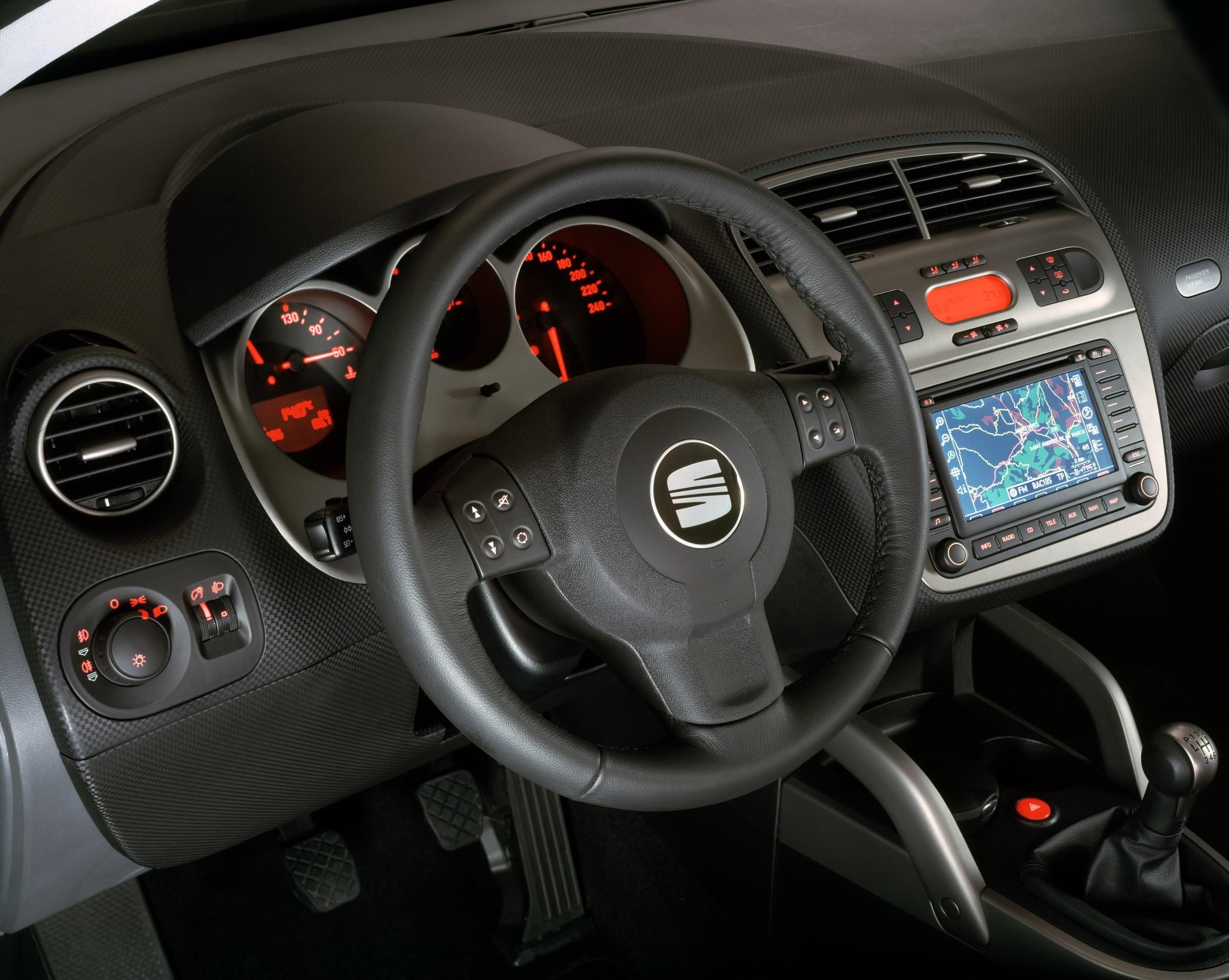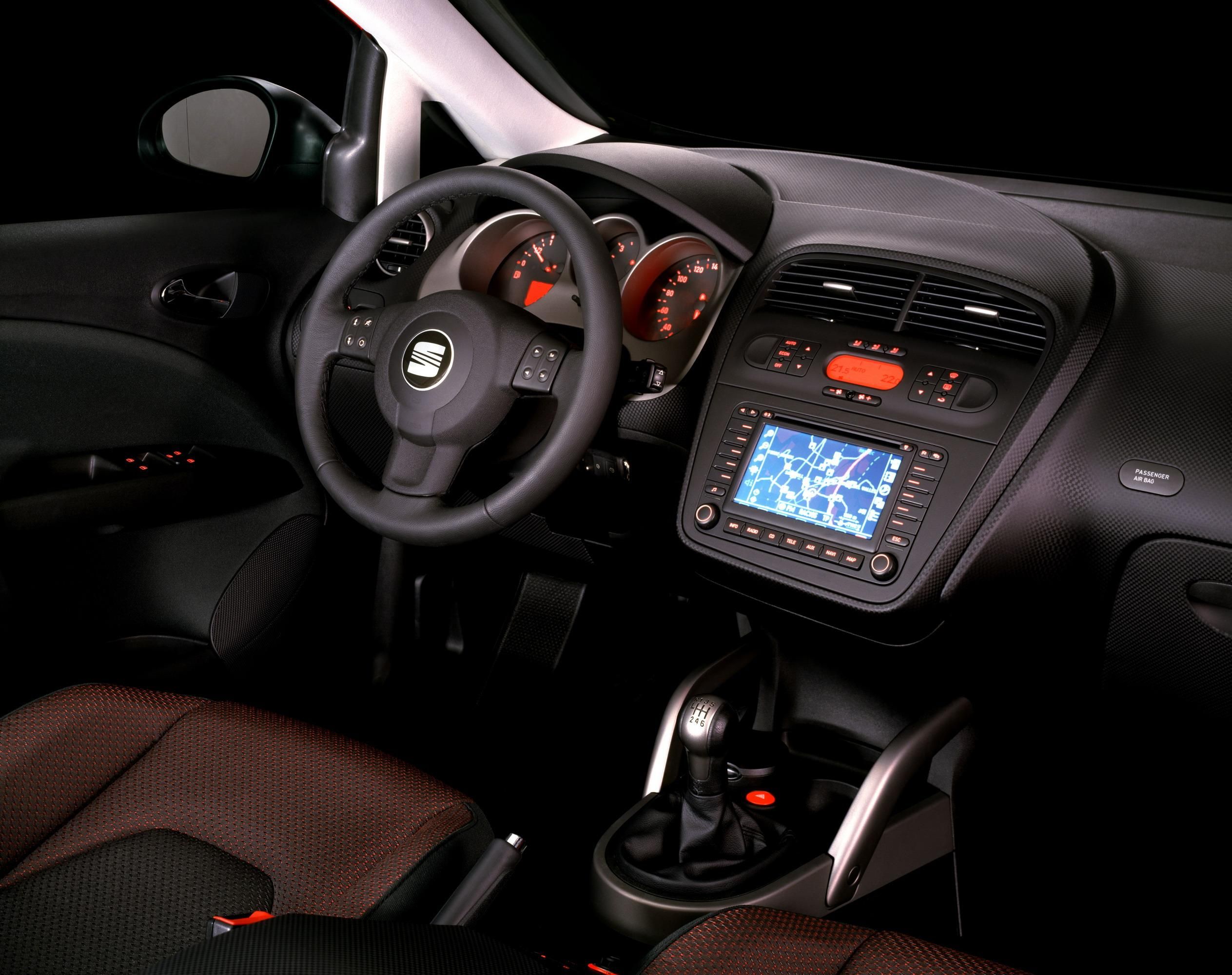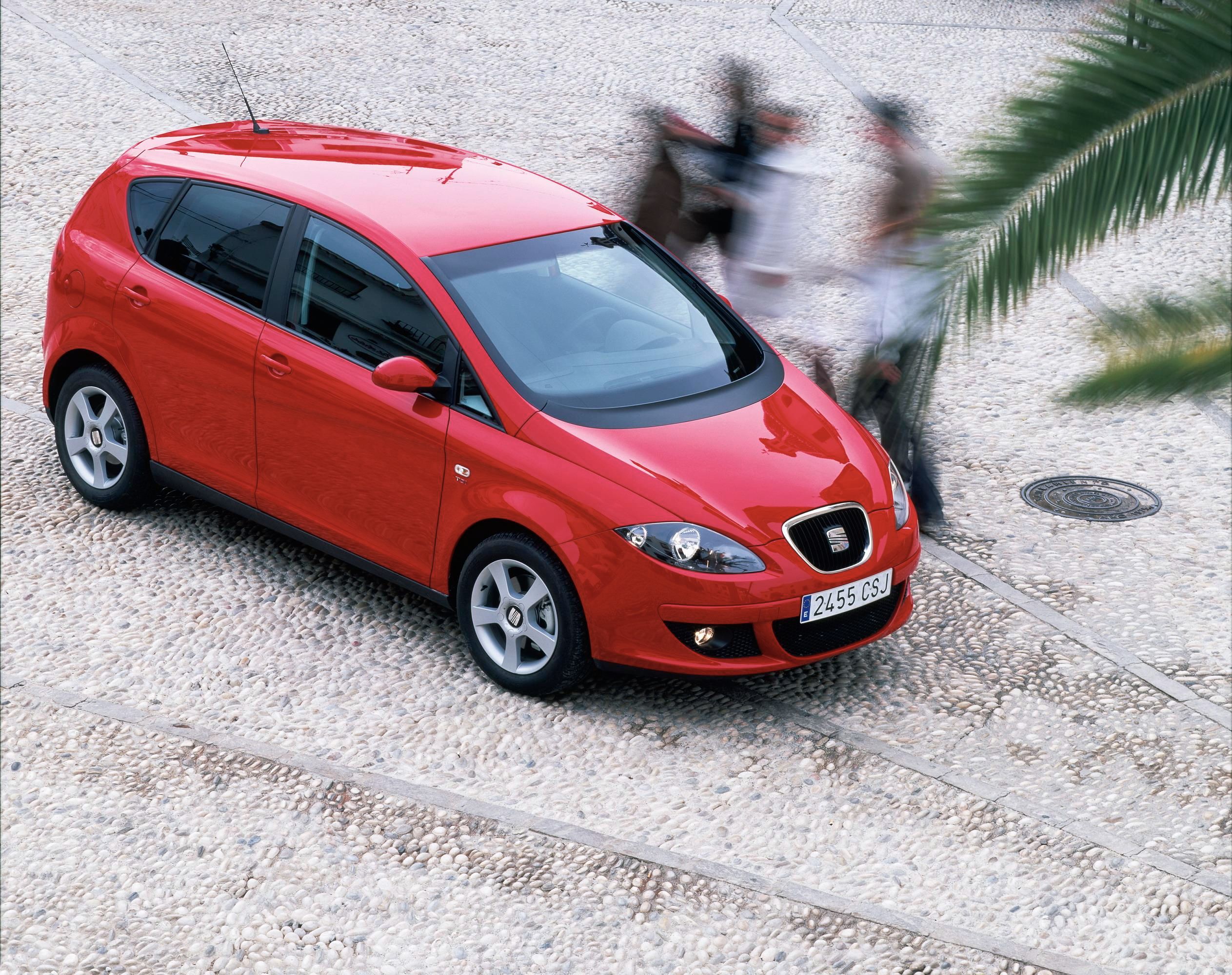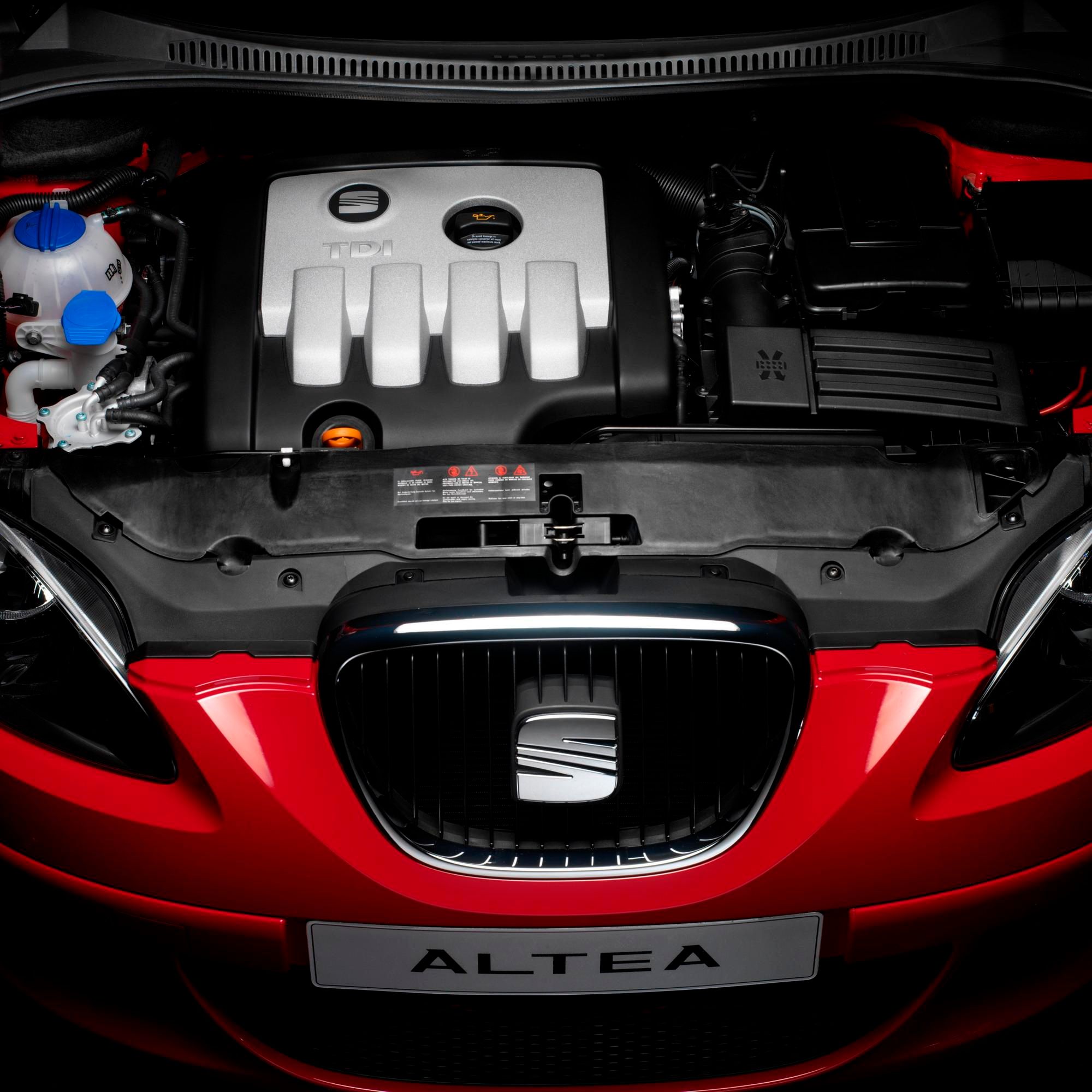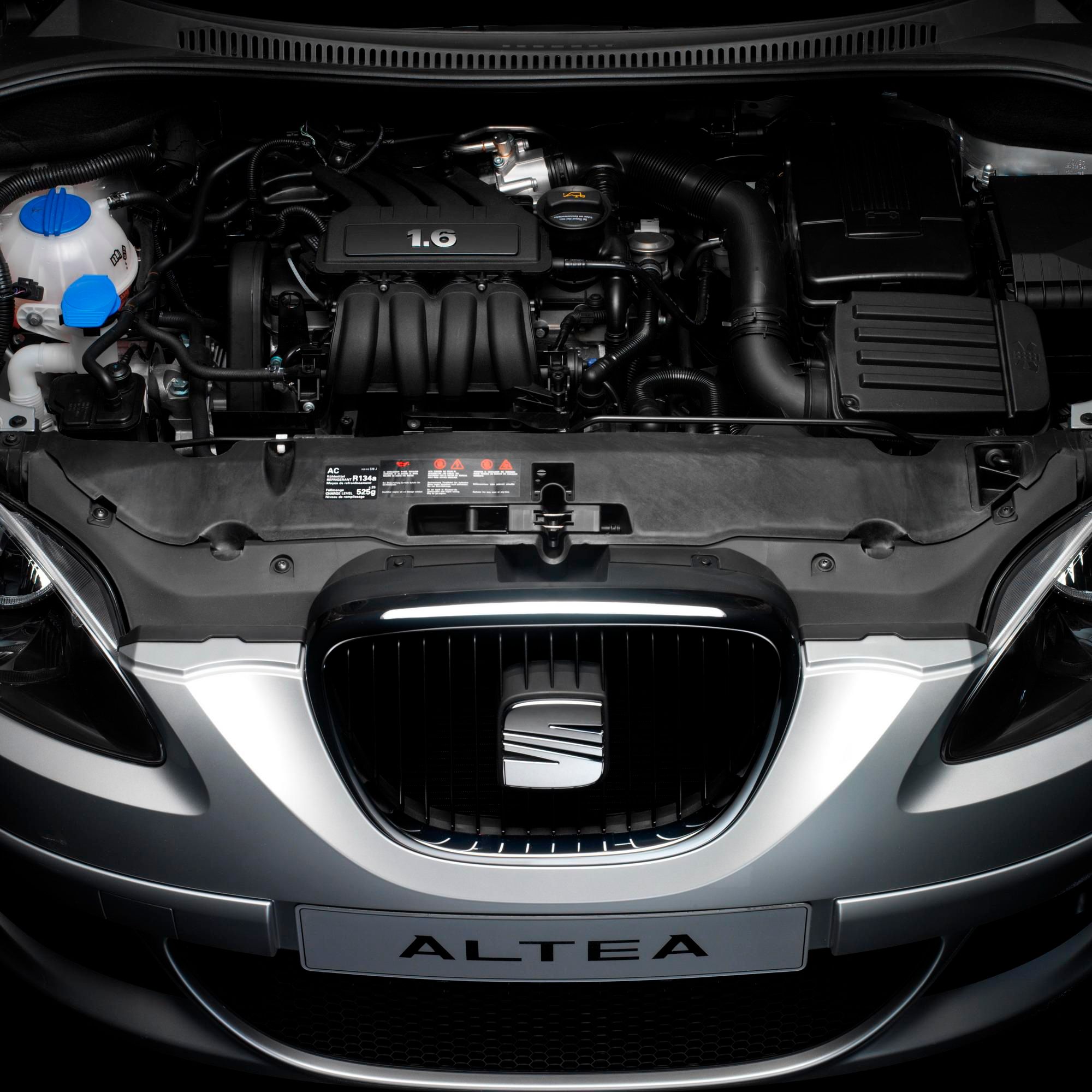The Altea is a car that understands your need to expand your boundaries. The SEAT Altea takes the concept of added space to a brand new dimension. With 3 cubic meters of personal space, you will have plenty of reasons to enjoy your drive.
Design, space, technology and power blended together to create your own private universe, each time you get behind the wheel of the Altea. It’s about respecting your Personal Space.
There are four engines in the Altea range, two petrol and two Diesel. The petrol range includes the 150 hp 2.0 FSI and the 102 hp 1.6, while the diesel range features the 140 hp 2.0 TDI and the 105 hp 1.9 TDI versions.
In creating the Altea, one factor stood out above design and sporty performance: confidence. Something evidenced by both the comprehensive safety it offers you and your family, and the 5-star rating it received from the prestigious Euro NCAP association. This lofty recognition guarantees construction quality as well as the maximum protection for vehicle occupants. The tests are incredibly stringent and a star is only awarded after the car has performed to the highest standards. The Altea meets the needs of your lifestyle.
Press release after the jump.
Press release
The SEAT Altea is now here, a model with which SEAT heralds a new generation of products. Developed at SEAT's Technical Centre, the Altea carries the new look of the brand's models and is the first vehicle to be wholly developed within the Audi Brand Group since it was established in 2002.
The dawn of the new age for SEAT is based on three fundamental pillars - the well-known Ibiza and León, and the new Altea. This model spearheads a new vehicle concept within the range, the MSV (Multi Sports Vehicle), which adds innovative, suggestive styling to compact mono-space values as well as the underlying characteristic of all SEAT models - sporty character and handling.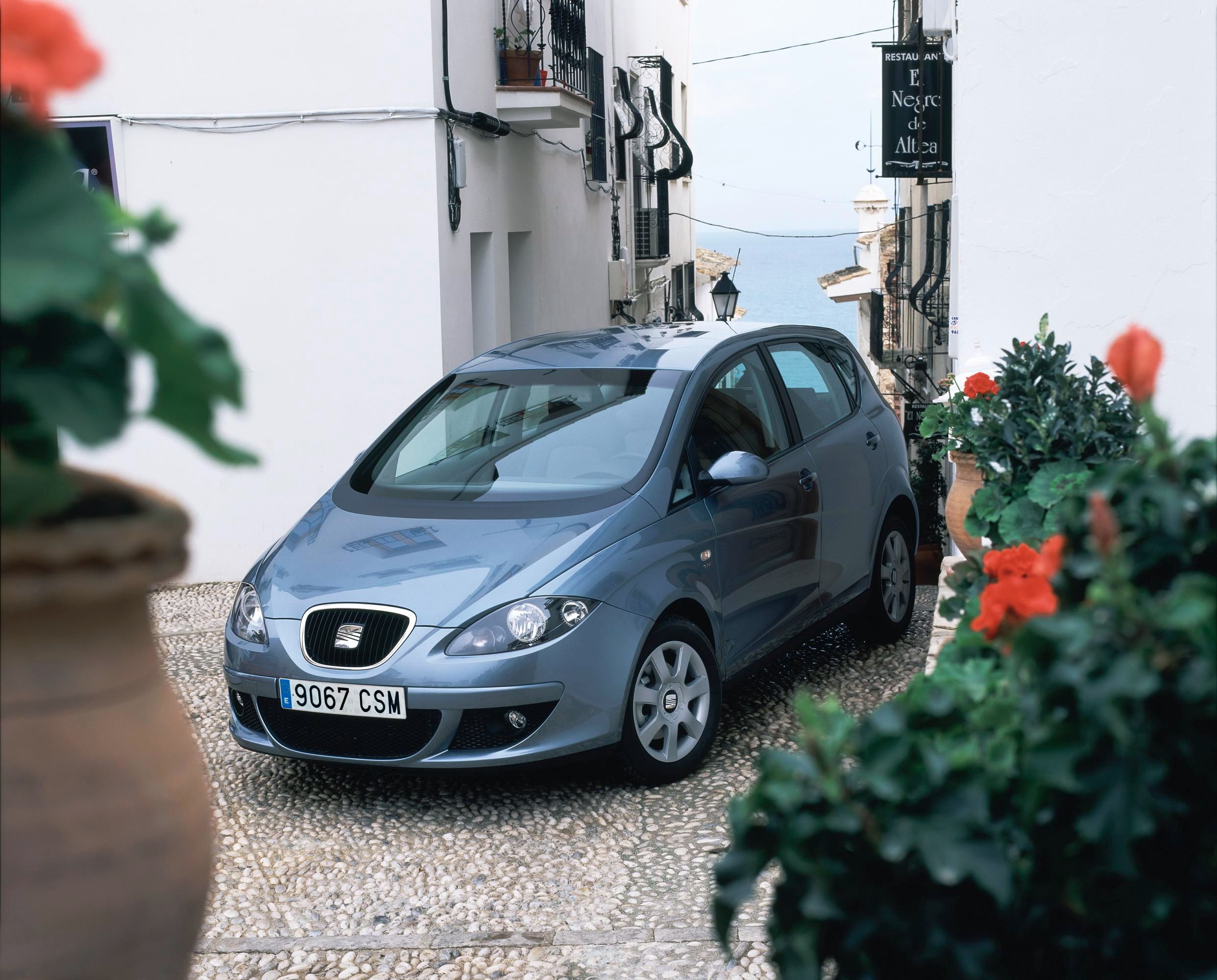 The SEAT Altea is attractive at first glance. Designed by Walter de'Silva and his team at SEAT's Technical Centre, the front end on the Altea features a large radiator grille and expressive headlamps. The Dynamic Line is clearly visible from the side, starting at the front wheel arch and descending gracefully over the doors until the rear wheel. Designed by de'Silva himself, this line highlights the Altea's profile, and will be characteristic of all of SEAT's future production models.
The SEAT Altea is attractive at first glance. Designed by Walter de'Silva and his team at SEAT's Technical Centre, the front end on the Altea features a large radiator grille and expressive headlamps. The Dynamic Line is clearly visible from the side, starting at the front wheel arch and descending gracefully over the doors until the rear wheel. Designed by de'Silva himself, this line highlights the Altea's profile, and will be characteristic of all of SEAT's future production models.
Its attractive design combines with high technology and quality applied in the development and production processes, such as laser welding on the wholly galvanised chassis assembly, which offers a 12 year perforation rust guarantee.
Produced exclusively in Martorell, the Altea manufacturing process is characterised by the use of highly resistant steel and the exhaustive supervision of each unit, with rigorous in-line quality controls.
Its design strength and sportiness are achieved through compact dimensions. It is 428 cm long, 177 cm wide and 157 cm high, giving exceptional roominess in all five seats. Its two-tiered boot has a capacity of over 400 litres.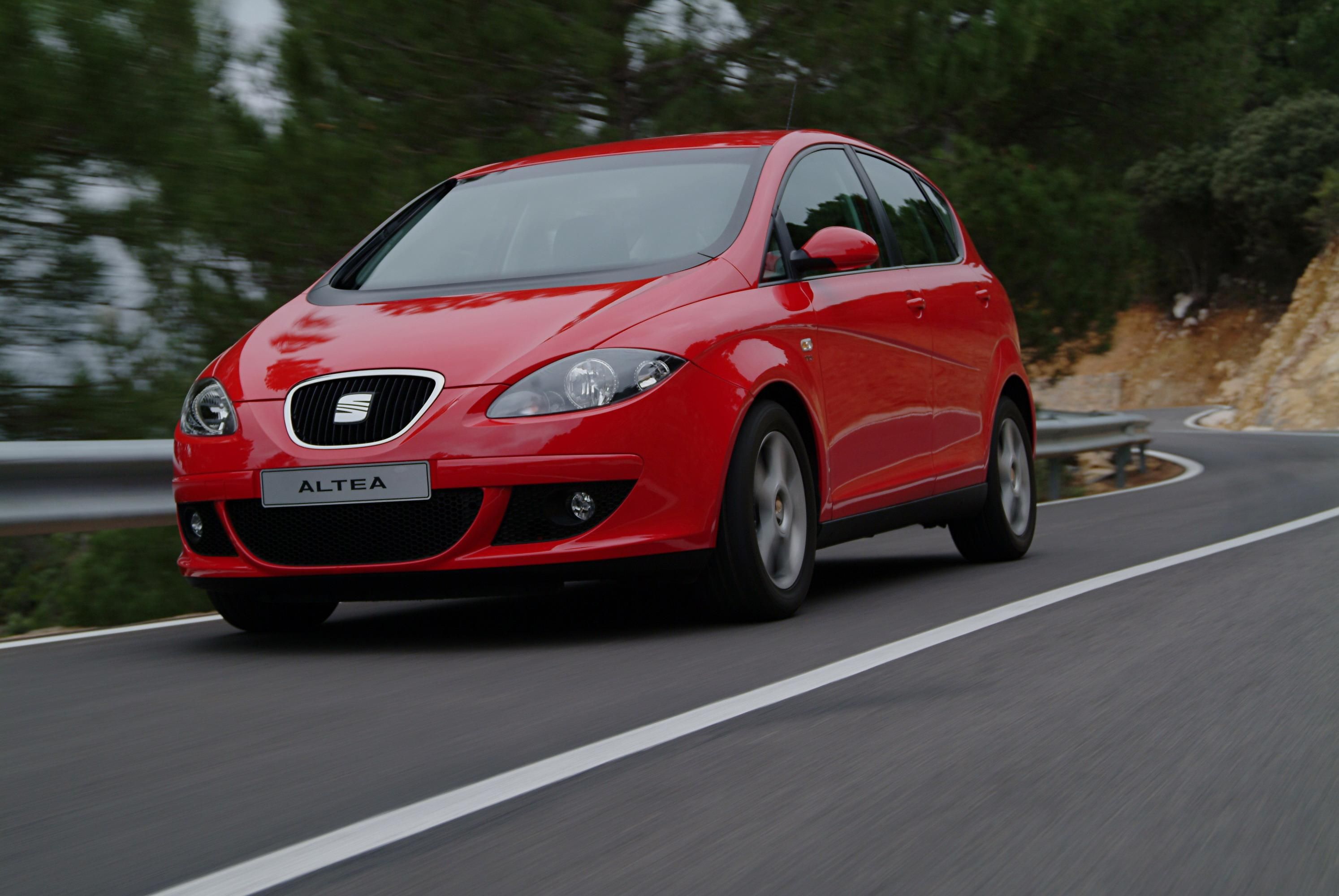 For its size, features and versatility, the Altea is destined to become first and foremost a family car. An analysis of the C segment reveals a growing demand for vehicles that offer more room and functionality. The Altea aims to fully satisfy this demand.
For its size, features and versatility, the Altea is destined to become first and foremost a family car. An analysis of the C segment reveals a growing demand for vehicles that offer more room and functionality. The Altea aims to fully satisfy this demand.
A new compact vehicle concept emerges, the MSV (Multi Sport Vehicle), which combines driving pleasure and the emotional design characteristics of sports cars with the multi-functionality and greater roominess currently sought by customers.
The Altea features several novelties, including FSI technology, a dual-clutch DSG gearbox, a latest generation engine range, each delivering more than 100 hp output; newly designed front suspension, multi-link rear axle, new electro-mechanical steering gear, individual driver and passenger air conditioning, and an exclusive Altea element- windscreen wiper blades camouflaged in the A-pillars at either side of the windscreen.
With the Altea, SEAT also takes a step forward in engine availability. The petrol range will be made up of the 150 hp (110 kW) 2.0 FSI and the 102 hp (75 kW) 1.6, while the Diesel range will include the 140 hp (103 kW) 2.0 TDI and the 105 hp (77 kW) 1.9 TDI versions.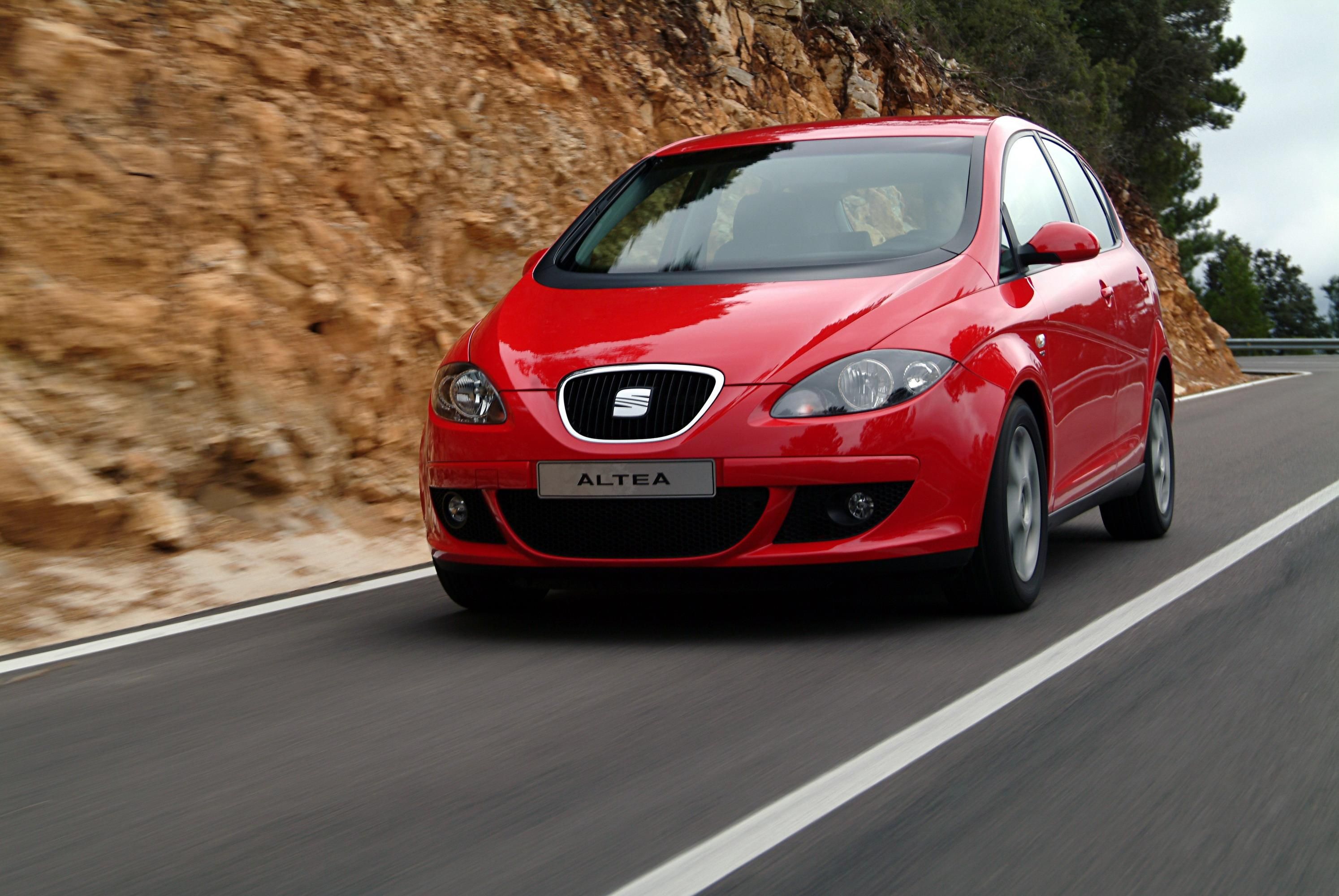 The two-litre FSI and TDI are the most powerful engines, and will be mated to a six-speed manual gearbox. The FSI will also be available with a six-speed automatic and sequential Tiptronic, whereas the new, six-speed DSG gearbox will be available on the 2.0 TDI.
The two-litre FSI and TDI are the most powerful engines, and will be mated to a six-speed manual gearbox. The FSI will also be available with a six-speed automatic and sequential Tiptronic, whereas the new, six-speed DSG gearbox will be available on the 2.0 TDI.
The SEAT Altea features a comprehensive level of active safety with ABS, TCS and ESP with the built-in emergency braking system. Stability and exceptional road handling are guaranteed on a vehicle with these characteristics thanks to its new electro-mechanical power steering and a newly designed chassis, which includes the well-known Agile Chassis technology developed at SEAT's Martorell Technical Centre.
As far as passive safety is concerned, the Altea will be the first SEAT model to be sold in the EU equipped as standard with six airbags: driver and passenger airbag, side airbag and curtain airbag, as well as three-point anchoring on all seatbelts, front seatbelts with pyrotechnical pre-tensioners and rear seats with the Isofix system for child seats.
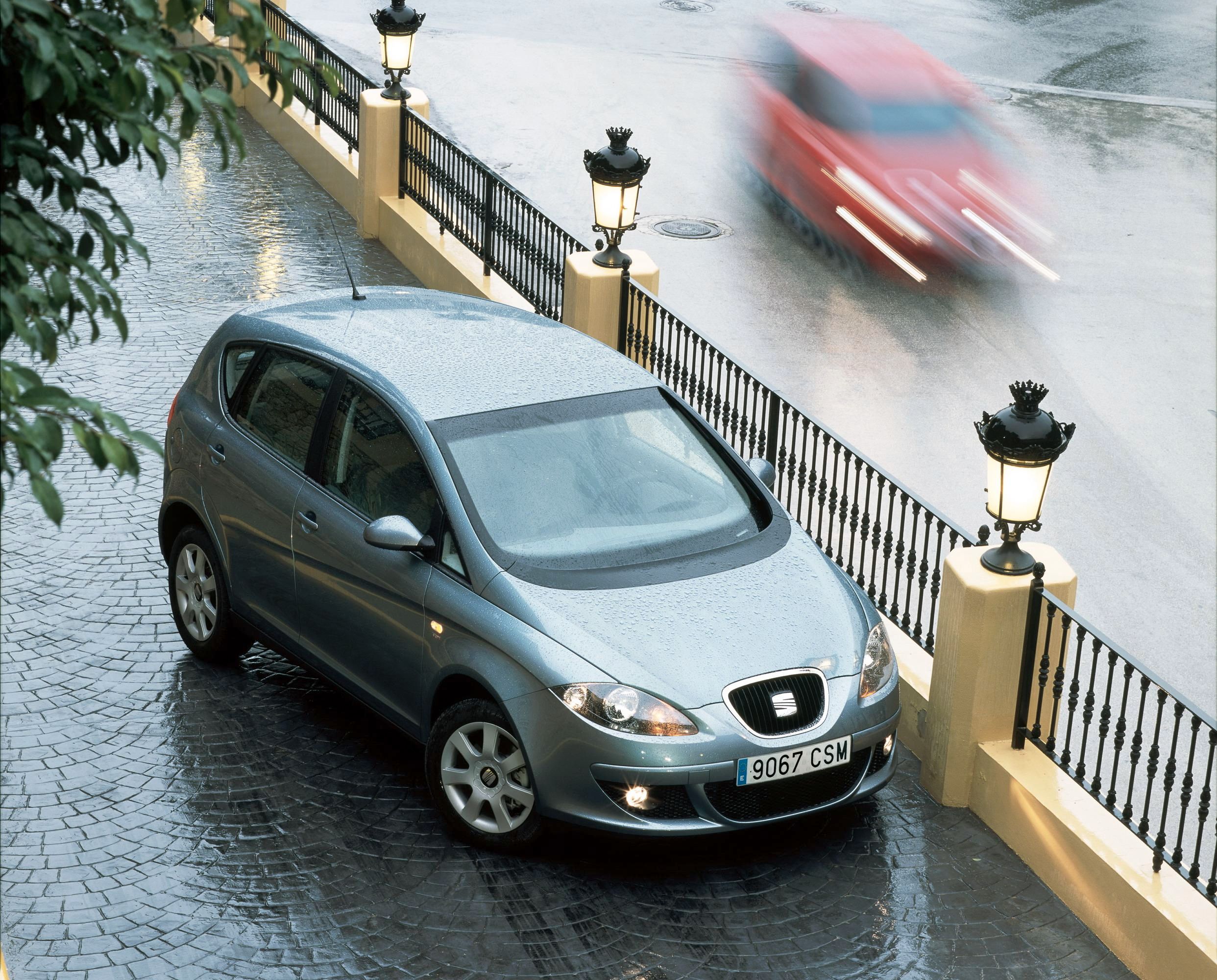
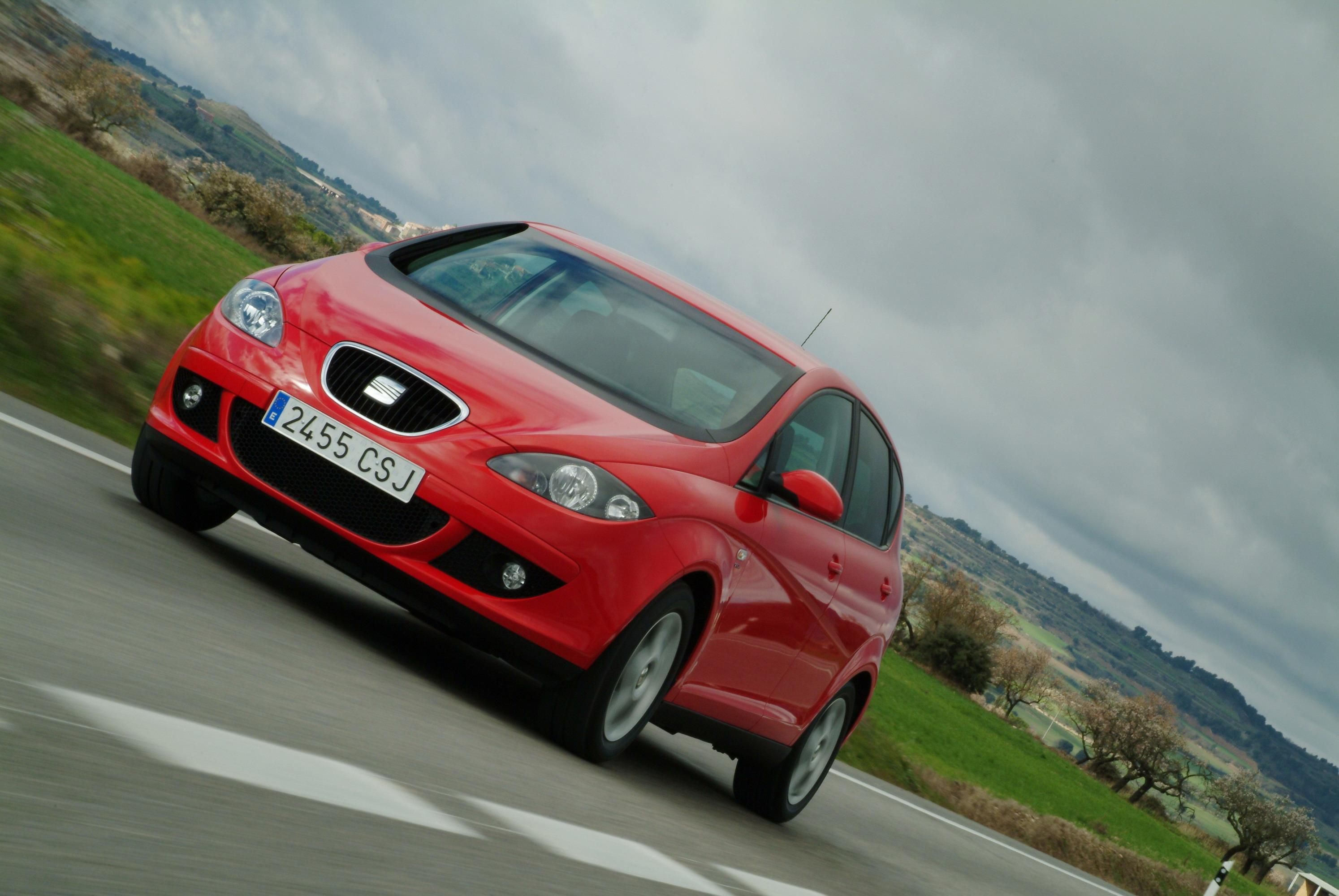
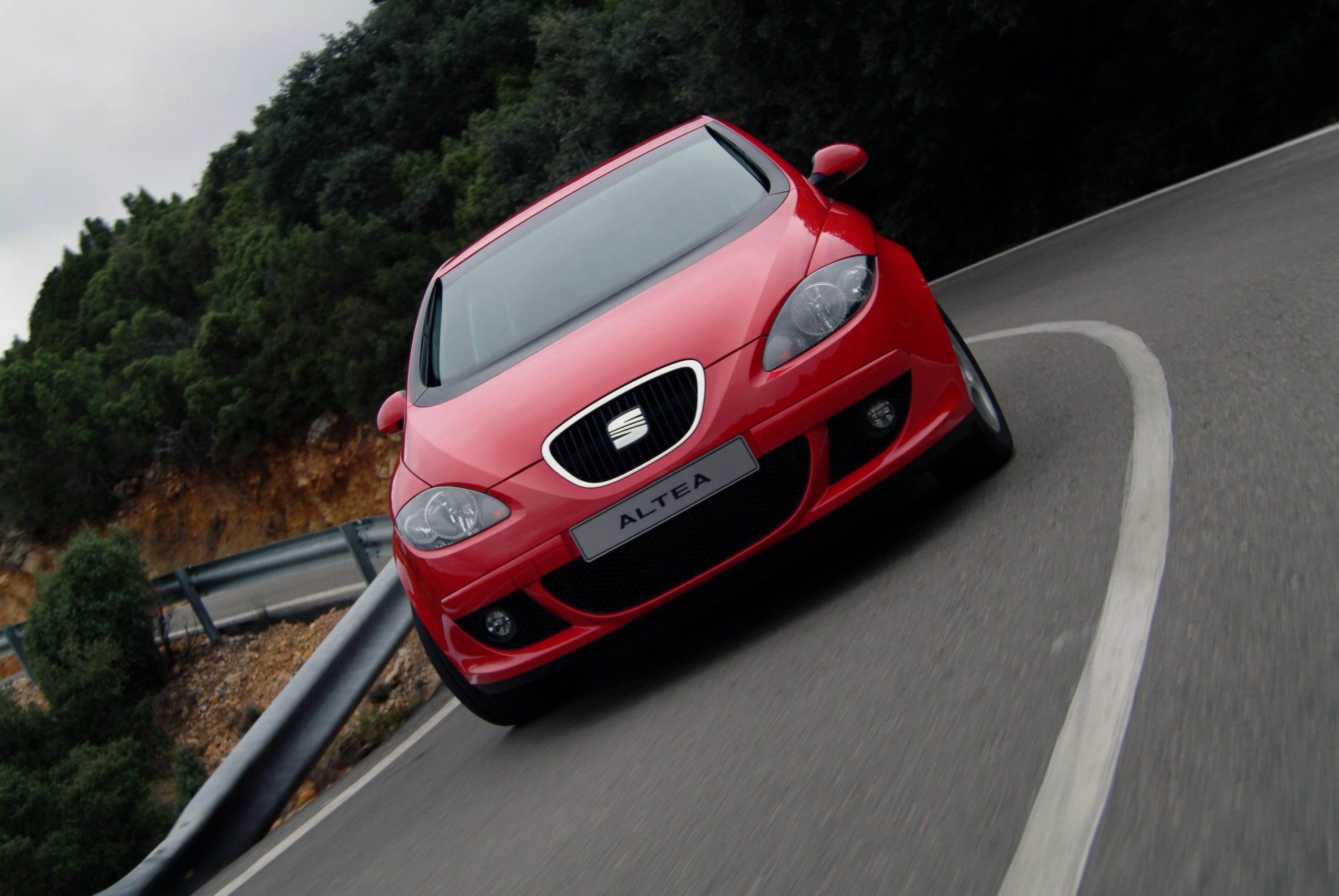
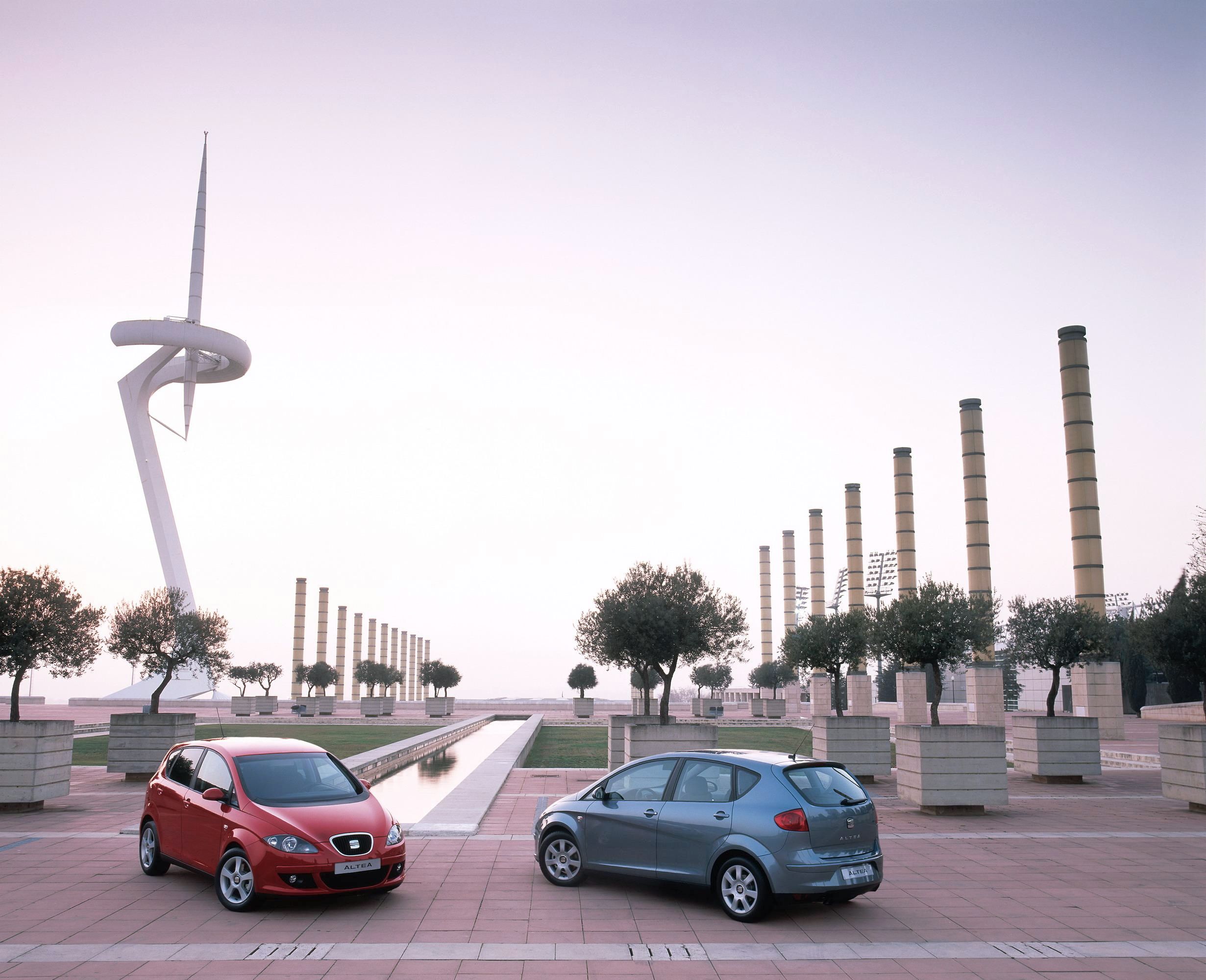
-----
Exterior Design
Showcased at the 2003 Frankfurt Motor Show, the Altea Prototipo previewed the basic, nearly definitive traits of the production Altea and introduced the main points of the MSV (Multi Sports Vehicle) concept.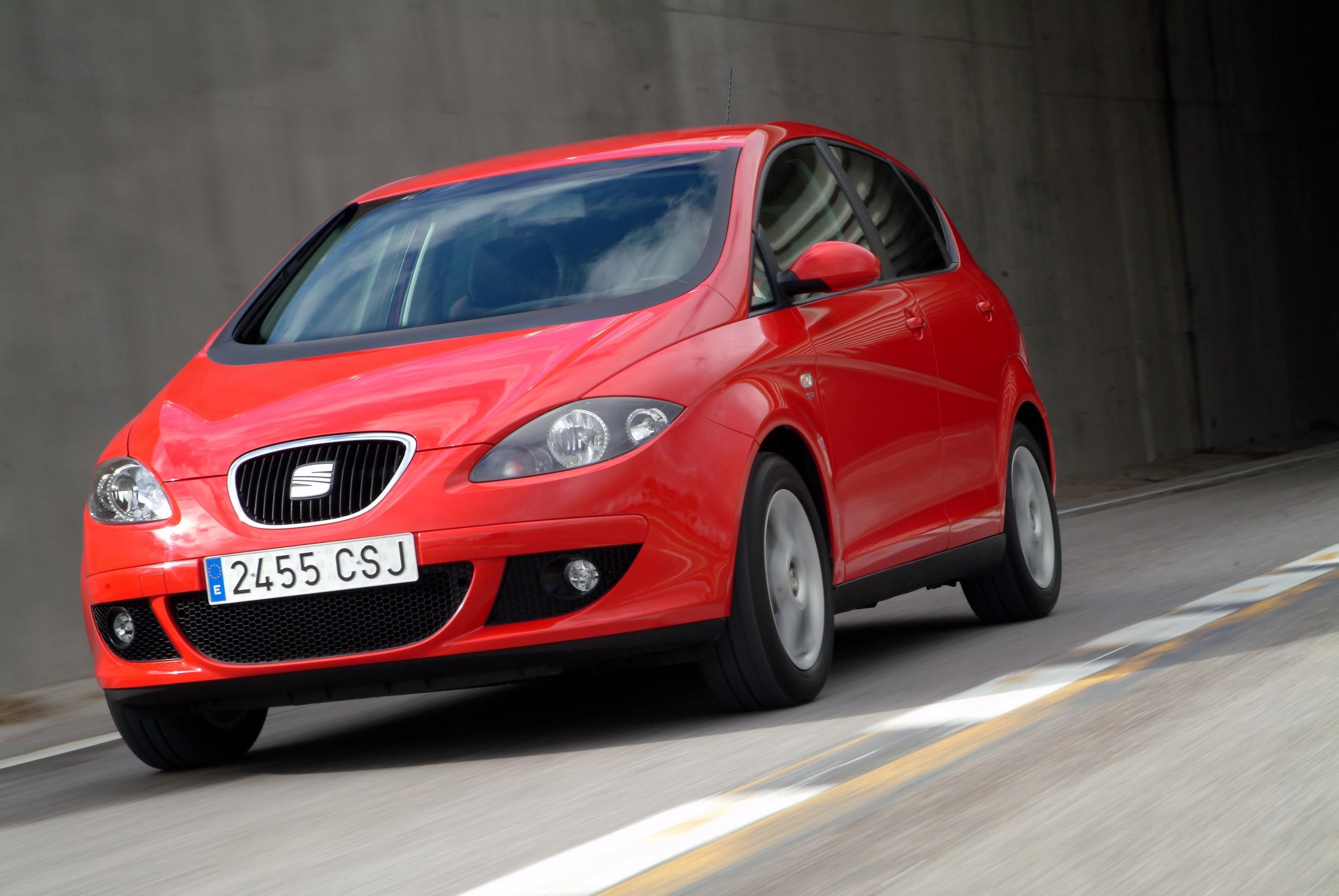 "The SEAT Altea is a vehicle that combines the traits that characterise the image of all future SEAT products. It's not about evolution, but a revolution. The Altea will be followed by other models that will confirm this enormous design advance. Our integration in the Audi Brand Group will bring a positive transformation for SEAT". This is how Walter de'Silva, SEAT and the Audi Brand Group Design director, sees the arrival of the Altea.
"The SEAT Altea is a vehicle that combines the traits that characterise the image of all future SEAT products. It's not about evolution, but a revolution. The Altea will be followed by other models that will confirm this enormous design advance. Our integration in the Audi Brand Group will bring a positive transformation for SEAT". This is how Walter de'Silva, SEAT and the Audi Brand Group Design director, sees the arrival of the Altea.
Innovative, sporty design
Thanks to the smoothness of each of the lines that grace its bodywork, the Altea's design is sporty, innovative and proportionally compact. Its design contributes to the aesthetic definition of the MSV concept, and is based on the image previewed by the SEAT Salsa concept car in 2000.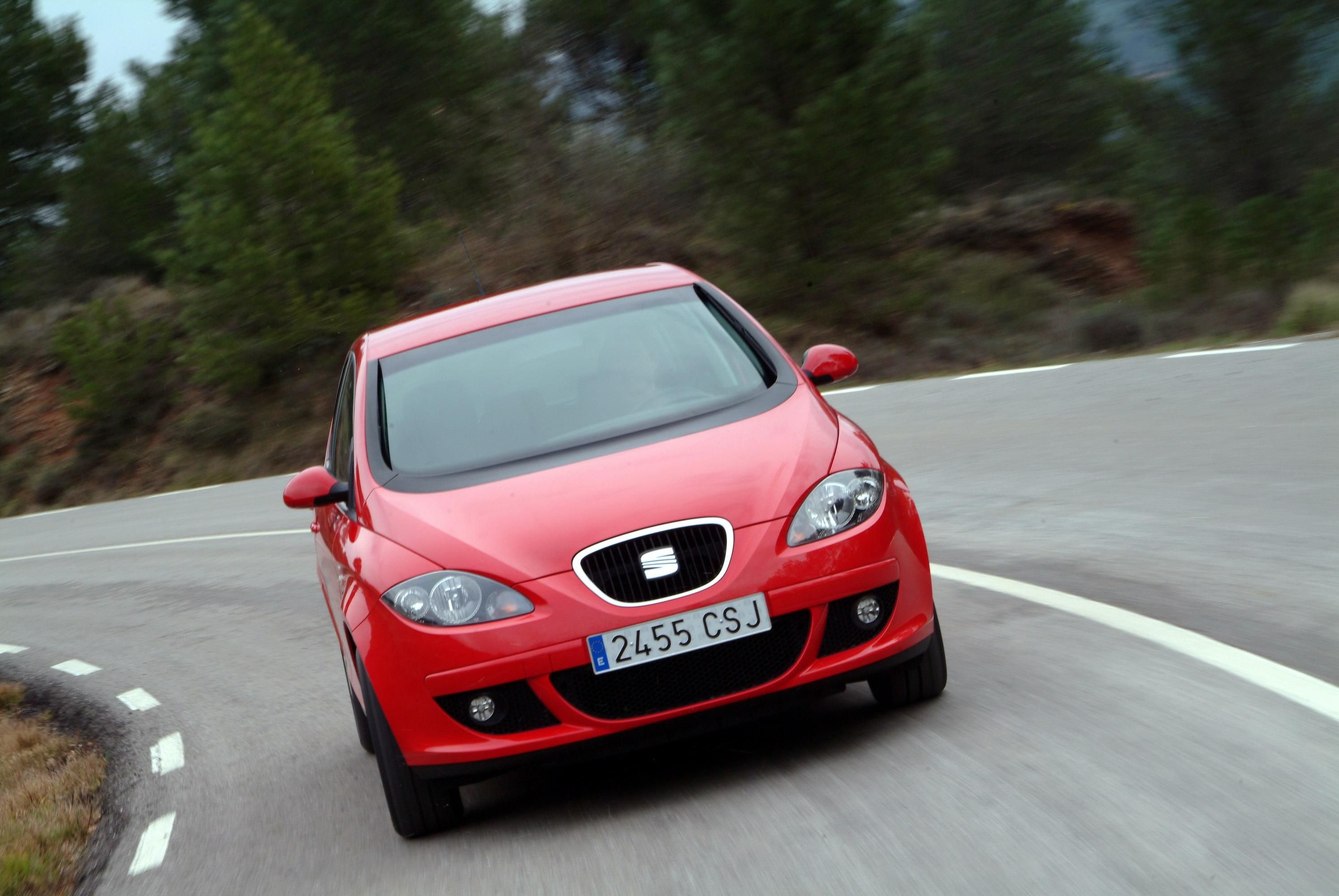 The front end features a broad, inverted trapezium-shaped radiator grille with a chrome surround, which centres the large 'S' SEAT symbol. Another characteristic on the front end of the Altea is the eye-shaped double headlamps. To make it look even more life-like, the indicator light is on the inside and resembles a teardrop.
The front end features a broad, inverted trapezium-shaped radiator grille with a chrome surround, which centres the large 'S' SEAT symbol. Another characteristic on the front end of the Altea is the eye-shaped double headlamps. To make it look even more life-like, the indicator light is on the inside and resembles a teardrop.
The attractive design of the bumper also stands out. This element features a honeycomb mesh on the radiator grille and foglamps set at either end like two small diamonds.
A clean sweeping glance covers the front of the bonnet to the end of the roof. The view is unobstructed thanks to one of the Altea's most exclusive details - the wiper blades camouflaged at either end of the windscreen behind the A-pillars. This original SEAT development embellishes the front and lends greater aerodynamic qualities.
Distinguishing feature
The Dynamic Line characterises the Altea from the side. Designed by Walter de'Silva, this attractive feature begins at the front wheel and descends gradually over the doors until the rear wheel arch.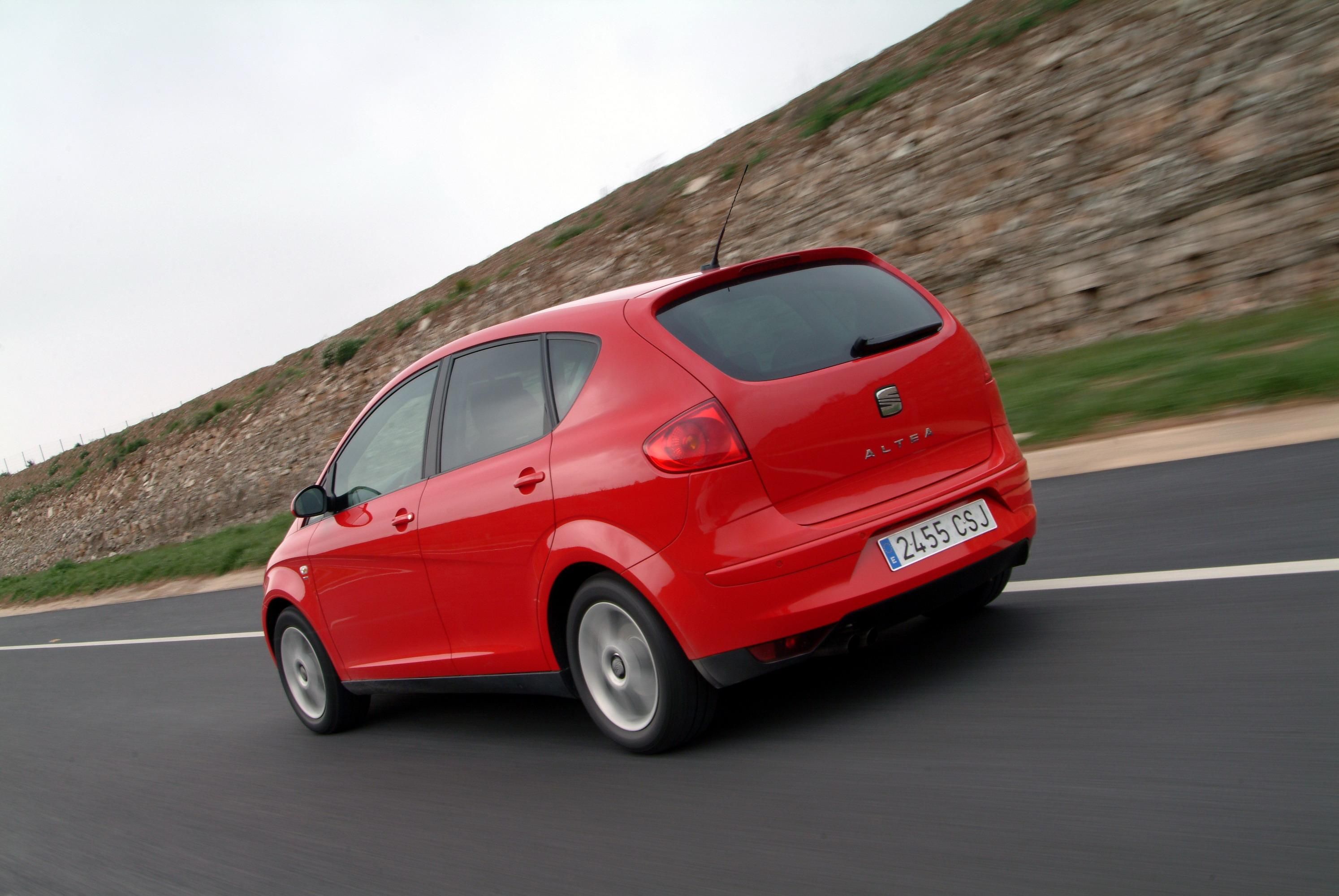 It is true the Altea obeys an unwritten commandment in sports car design, which says "the proportion of metal to glass must be two-thirds metal and one-third glass". Besides the large windscreen and rear window, the side window design is especially attractive.
It is true the Altea obeys an unwritten commandment in sports car design, which says "the proportion of metal to glass must be two-thirds metal and one-third glass". Besides the large windscreen and rear window, the side window design is especially attractive.
Another feature SEAT has introduced on the Altea is the car's exterior identification. The letters TDI or FSI are located beneath the side indicators. On the 140 hp Diesel version the 'T' is silver and the 'DI' is in red. On the FSI version, the 'F' is silver and the 'SI' is red.
The last outstanding feature when looking at the Altea from the side is the wheels, which have a certain structure and design according to the equipment level chosen. All the wheels in the Altea range have 16 inch steel or light alloy wheels. The model also offers two different designs on its alloy wheels -a seven-spoke option for the Stylance finish and a sportier five-spoke option for the Sport and Sport-up versions. They will soon be available with new 17 inch wheels.
Located in the centre of the rear hatch, the word ALTEA dominates the rear of the vehicle in slightly spaced, capital letters, immediately beneath the large 'S' brand symbol that doubles as the boot latch.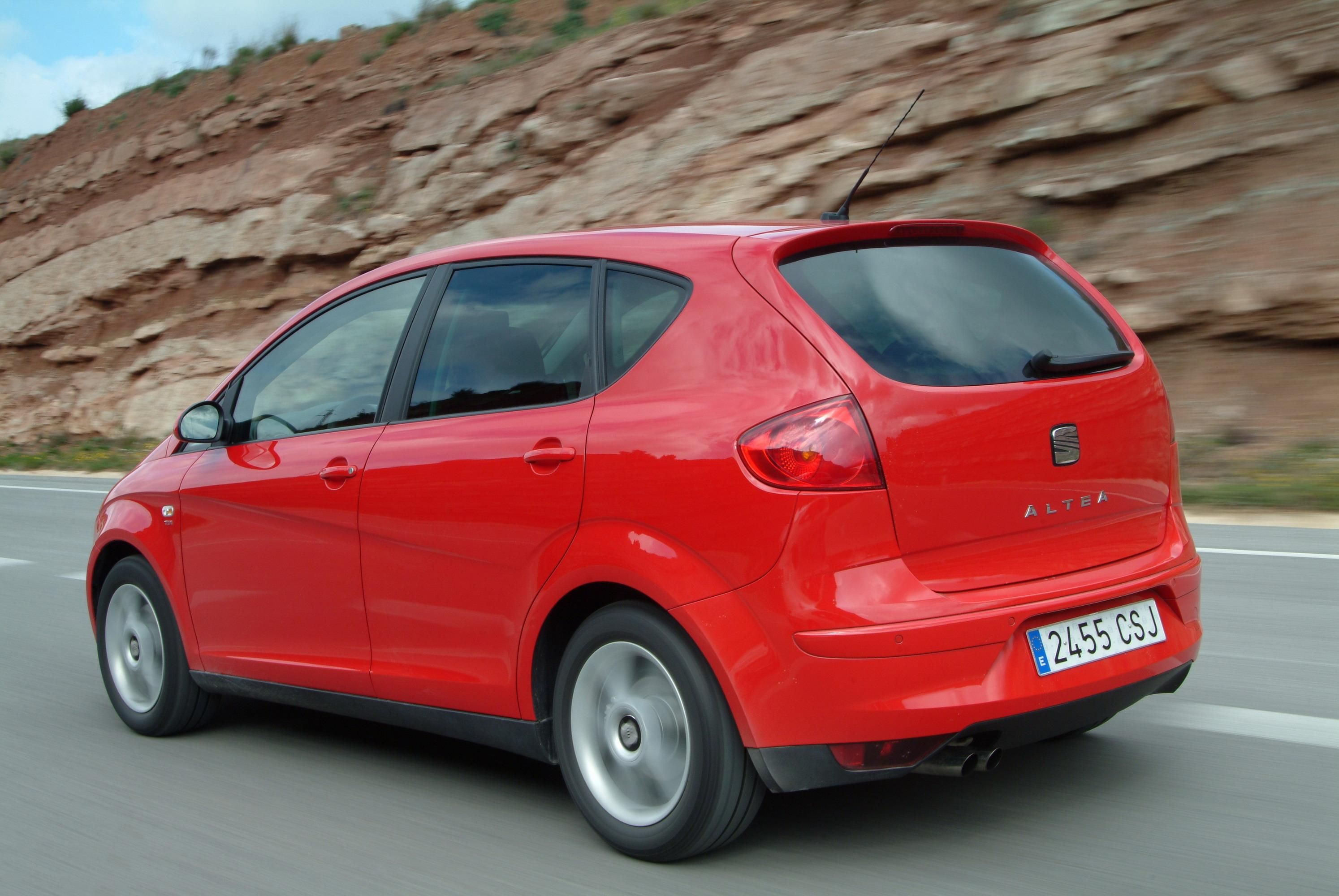 The taillight design is reminiscent of an iris, with a concentric arrangement of sidelight, brake light and indicator light. The light clusters are located at the outer edge of the body, giving the model a sporty, compact look.
The taillight design is reminiscent of an iris, with a concentric arrangement of sidelight, brake light and indicator light. The light clusters are located at the outer edge of the body, giving the model a sporty, compact look.
An elegant spoiler tapers off the roof and includes the third brake light made up of a row of powerful leds. The tailpipe juts out beneath the bumper. All the versions except the 102 hp 1.6 feature a double exhaust, flanked on the left by a foglamp and on the right by the reverse light.
-----
Interior
Sporty on the outside as well as on the inside. Aboard the Altea sportiness and roominess go hand in hand in a MSV. The spacious passenger compartment is comfortable for both driver and passengers, whether in the front or rear seats, and the boot has a volume capacity of over 400 litres.
Driver oriented instrument panel
The instrument panel is made up of two distinct zones. The first is closest to the windscreen and the second lies in front of the driver and passenger, with a different colour and texture, both sporty and attractive, creating a functional atmosphere.
The large central console stands out prominently on the instrument panel. It is slightly tilted toward the driver and houses the audio equipment, navigation system and climate control.
To the left of the console behind the steering wheel lie three sporty, black-faced instrument dials. The rev counter is flanked by the speedometer and a third dial that indicates fuel level, coolant temperature, digital clock, kilometre counter and maintenance indicator, which gives information on the time and kilometres remaining until the next visit to the garage.
Both the speedometer and rev counter '0' is located at 'six o'clock', so the needles begin at the bottom and move clockwise.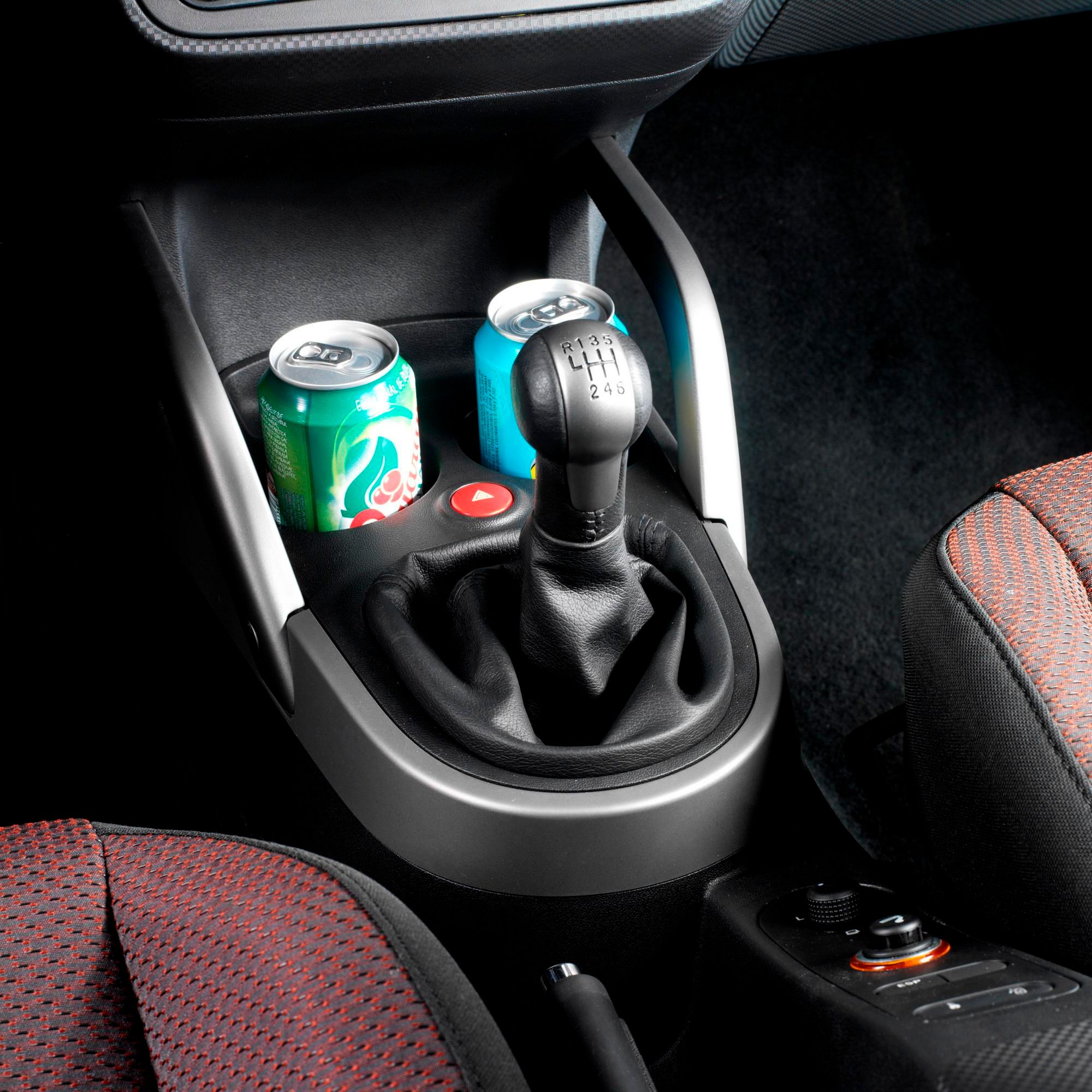 A new ESP warning symbol lights up on the speedometer when ESP is disconnected using a switch on the central tunnel.
A new ESP warning symbol lights up on the speedometer when ESP is disconnected using a switch on the central tunnel.
Another attractive detail of the instrument panel is the way its lighting automatically dims or brightens, although this can also be controlled manually.
The instrument panel and the console make up a design unit that surrounds the driver, where each control or instrument is perfectly visible and easily within reach.
Hands on the steering wheel
The three-spoke steering wheel, slightly off-centre and somewhat flattened at the bottom, is reminiscent of competition racing. It is both height and reach adjustable and can include multi-function thumb controls for the audio equipment and navigation system options.
There are eight buttons. The four on the left select a CD from the CD loader, change radio stations, select a programme type, switch between alternative frequencies (from FM to AM and/or from FM to CD), repeat the last navigation indication and leave the audio equipment in silence mode.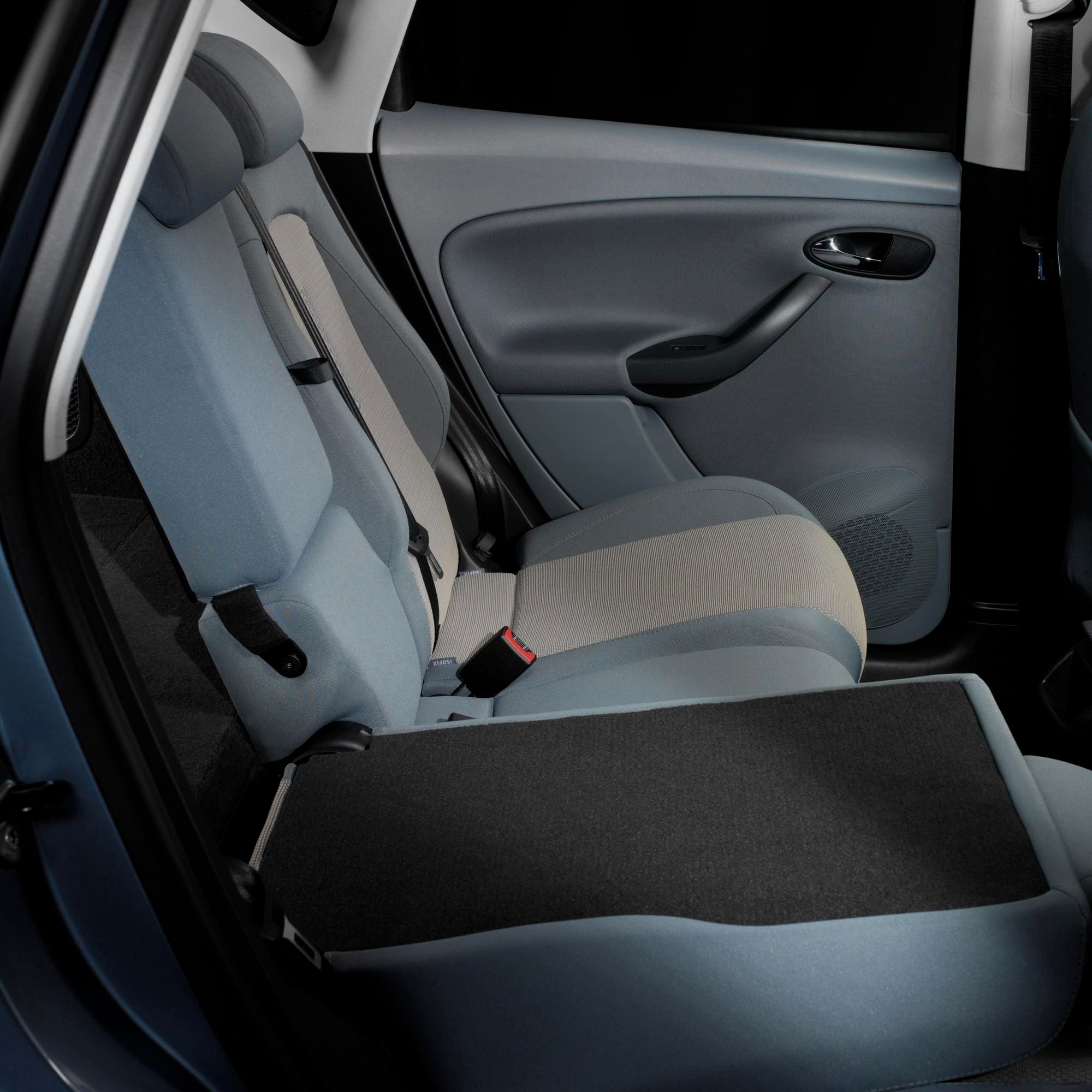 The four on the right tune to a memorised radio station, move to the next or previous song on a CD, fast forward or rewind a song while playing and change volume. The driver can choose to illuminate the eight buttons.
The four on the right tune to a memorised radio station, move to the next or previous song on a CD, fast forward or rewind a song while playing and change volume. The driver can choose to illuminate the eight buttons.
Hands on the steering wheel, except when shifting gears in manual mode. The short, sporty gear lever has a palm-fitting knob for easier handling and shifting.
Another novelty on the Altea lies at the driver's feet - an accelerator pedal which is hinged to the floor. The design of this element is typical of 60s sports cars and the Altea is the first model of the SEAT range to include it. Beside the clutch is a wide rest for the left foot, providing a natural, comfortable driving position.
Comfortable sculpted seats
The seat design on the Altea features evolved concepts in safety and comfort. All the seats are sculpted and feature attractive upholstery, side support and a long seat cushion which reaches the back of the knees.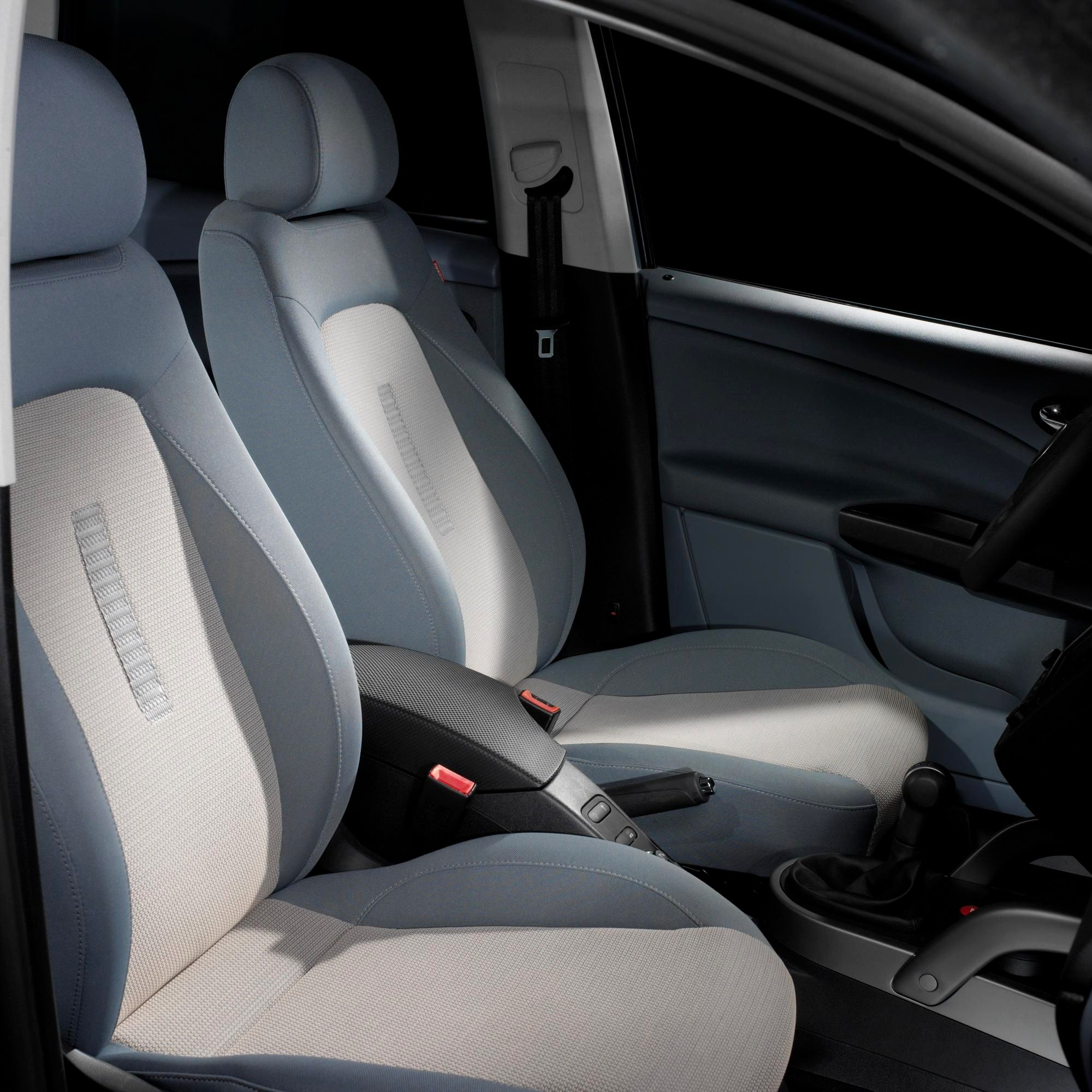 The comfortable seats are made with high quality, vibration-absorbing foam that reduce fatigue and increase driving pleasure.
The comfortable seats are made with high quality, vibration-absorbing foam that reduce fatigue and increase driving pleasure.
The driver seat is height and reach adjustable, has a tilting backrest and gives lumbar support, providing an ideal driving position.
The rear seat is big enough for three people and becomes a comfortable two-seater when the wide central armrest is lowered. Rear seat passengers have ample legroom thanks to the design of the front seats, with enough space near the floor for them to put their feet beneath the front seat cushions.
Over 30 storage solutions
The Altea has a storage place for everything, with more than 30 storage compartments here, there and everywhere.
The following compartments are within easy reach of the driver and passenger - glasses holder above the driver's door, large glove compartment in front of the passenger seat, a compartment and two cupholders beneath the central console, a drawer beneath each front seat and a large compartment on each front door that can carry a 1.5 litre bottle.
The front armrest has a two-tiered storage compartment; the top for small objects or CDs, and space beneath for the CD loader. The passenger seat has a side compartment with enough room for a drink can.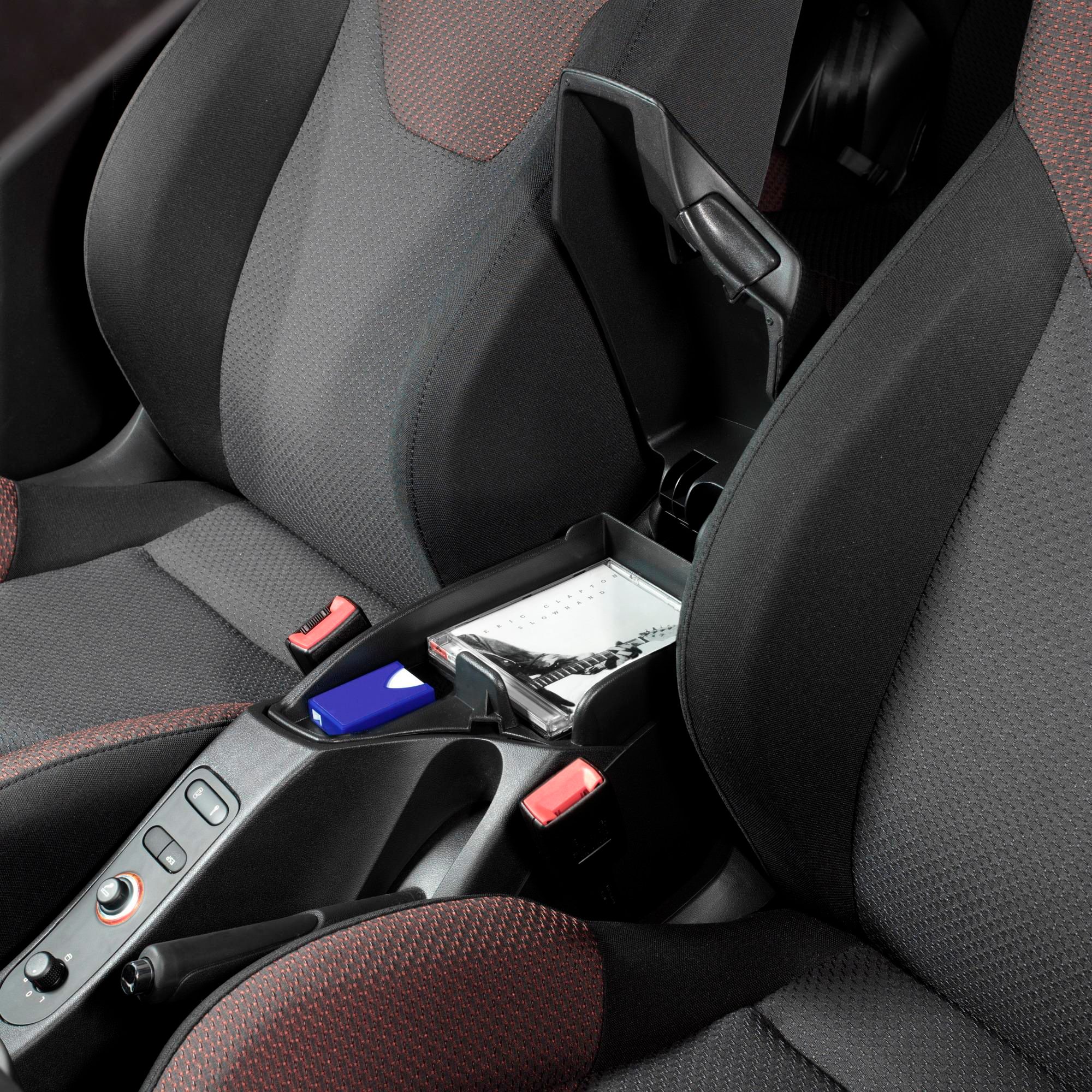 There is another compartment for small objects and another 12 volt socket at the front of the central tunnel, next to the ESP switch, ashtray or 12-volt socket and automatic rear door blocking switch.
There is another compartment for small objects and another 12 volt socket at the front of the central tunnel, next to the ESP switch, ashtray or 12-volt socket and automatic rear door blocking switch.
Rear seat passengers have a compartment on the side of their seat, a door panel that can carry a litre bottle, a pouch on the front seat backs, a compartment at the end of the central tunnel and a compartment and two cupholders when the armrest is lowered. At the base of the rear seats there are two straps to secure an umbrella.
Two hanger hooks end the storage capacity of the passenger compartment, but a lot more can be carried in the interior of the SEAT Altea when we take a close look at the boot.
Spacious boot
The SEAT Altea boot is really amazing. It has a two-tiered floor and there is still enough room beneath it all to house a full-size spare wheel or a spacesaver spare wheel or the complete puncture repair kit.
When opening the boot, there is enough space on the first level for everyday use.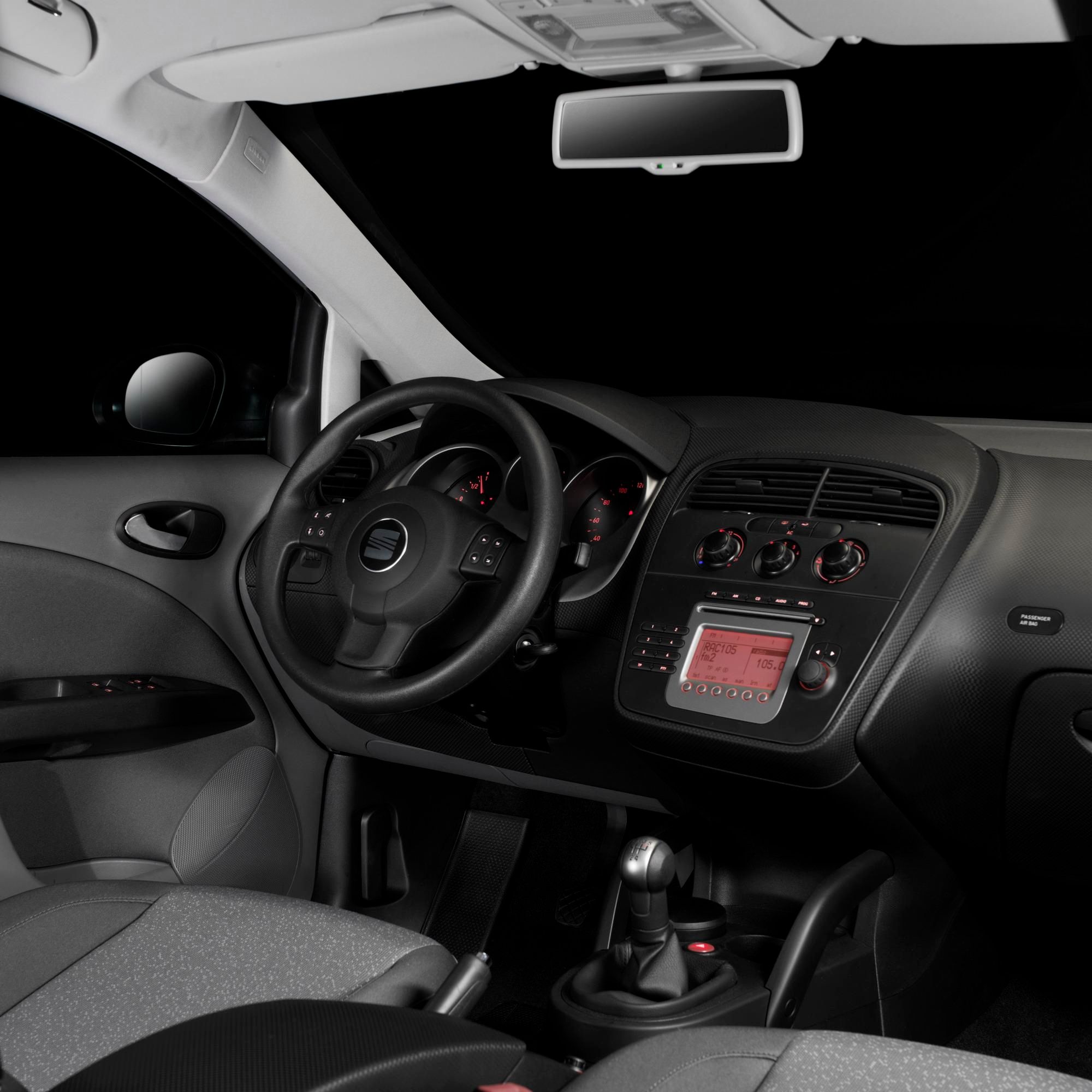 More space is available when the rear seats are folded. The operation is easy and can be done with one hand, without the need for removing the headrests. By pulling on a strap, the seats fold forward with the headrests beneath the front seats, leaving a completely flat loading area at the same level as the floor of the boot.
More space is available when the rear seats are folded. The operation is easy and can be done with one hand, without the need for removing the headrests. By pulling on a strap, the seats fold forward with the headrests beneath the front seats, leaving a completely flat loading area at the same level as the floor of the boot.
If more space is needed on the first level without folding the rear seats, the folding floor partition can be located at the back of the rear seats to increase the boot's capacity to 409 litres.
The false bottom has a moveable panel that limits the area for the chosen options (full-size or spacesaver spare wheel or puncture repair set), resulting in more or less available storage space.
The boot's maximum storage capacity is 1,320 litres when the rear seats are folded, the sliding partition is open and the rear parcel tray is removed.
The boot aims to be fully functional and includes new solutions for keeping objects in place, such as sturdy rings for fastening nets, side nets near the wheels and hooks for hanging bags.
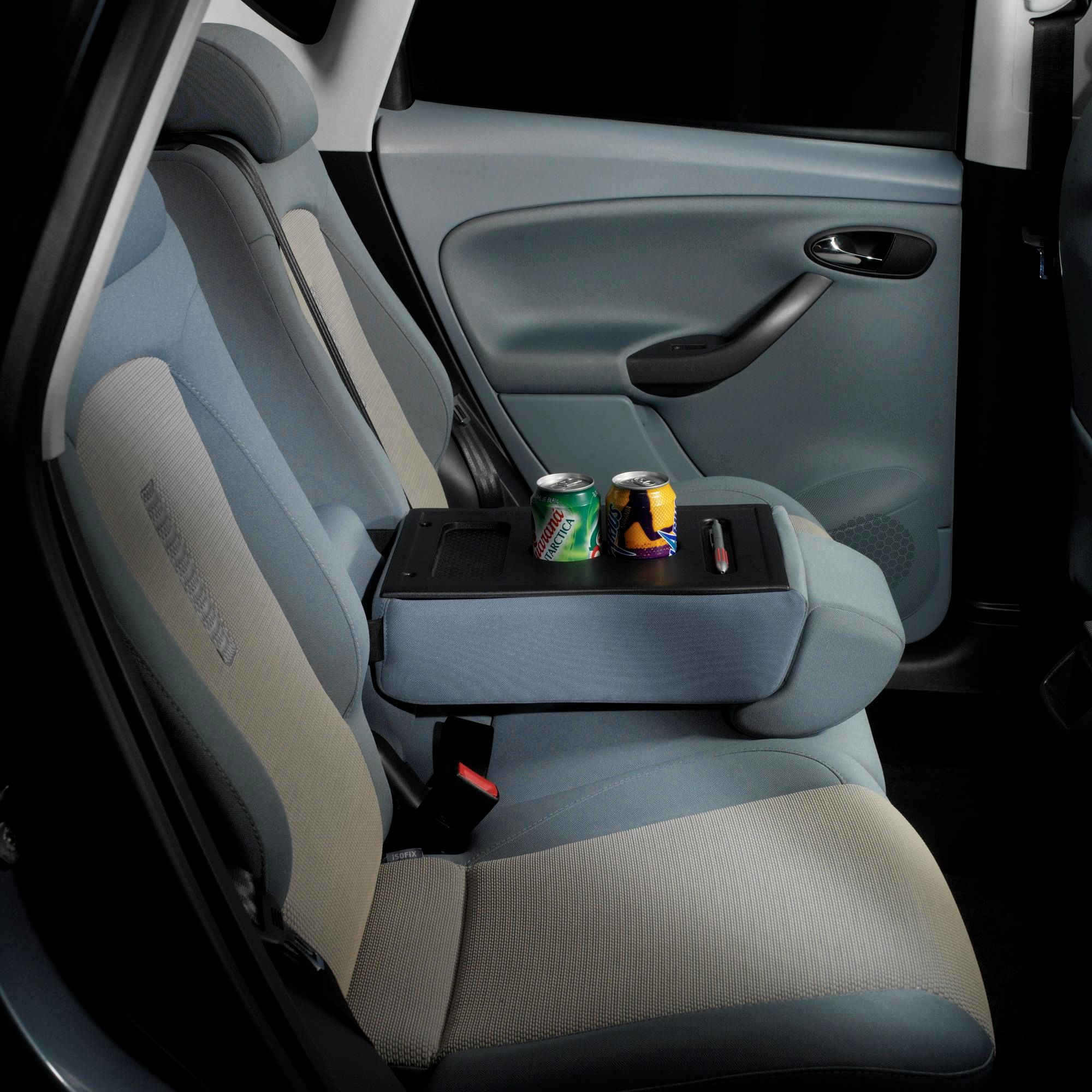
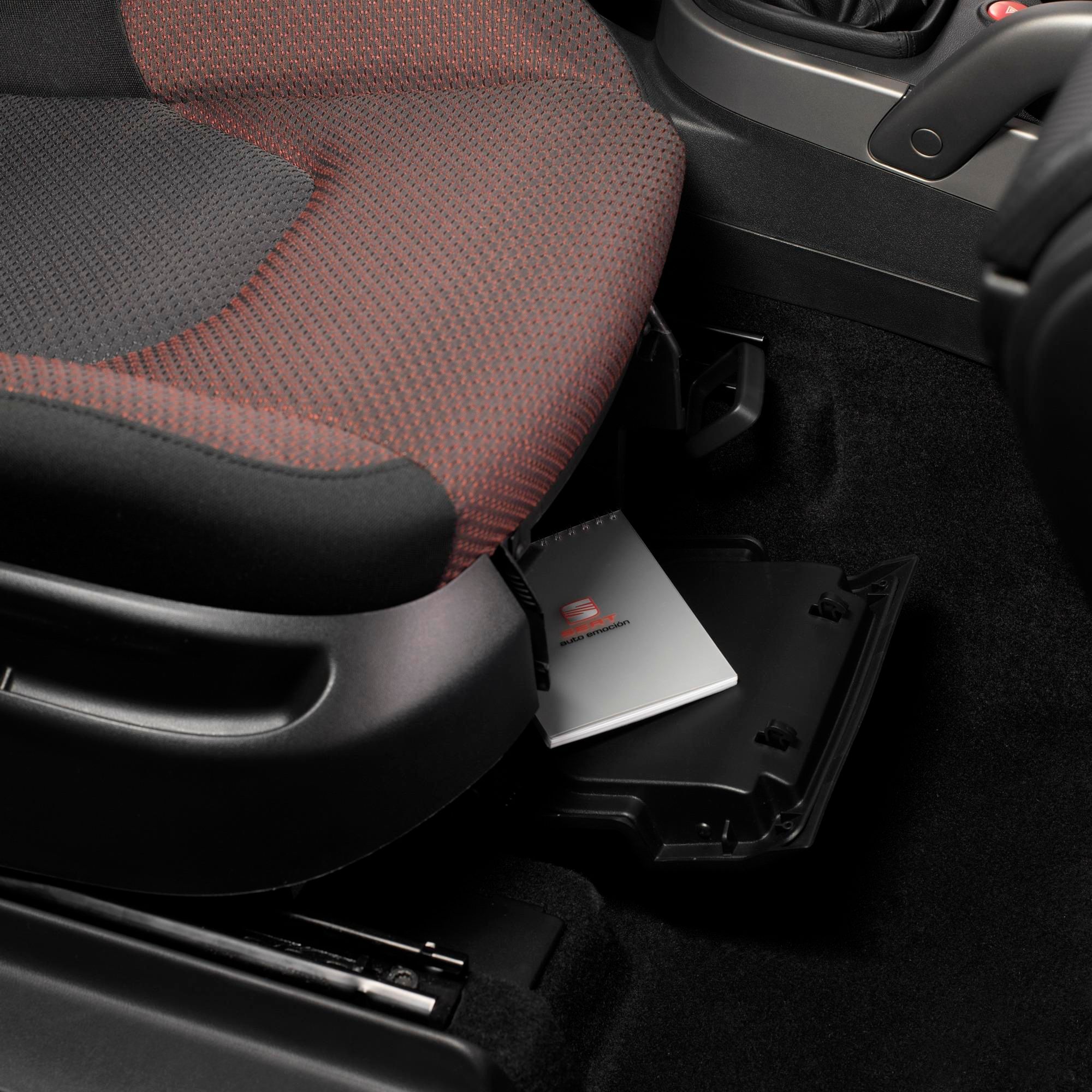
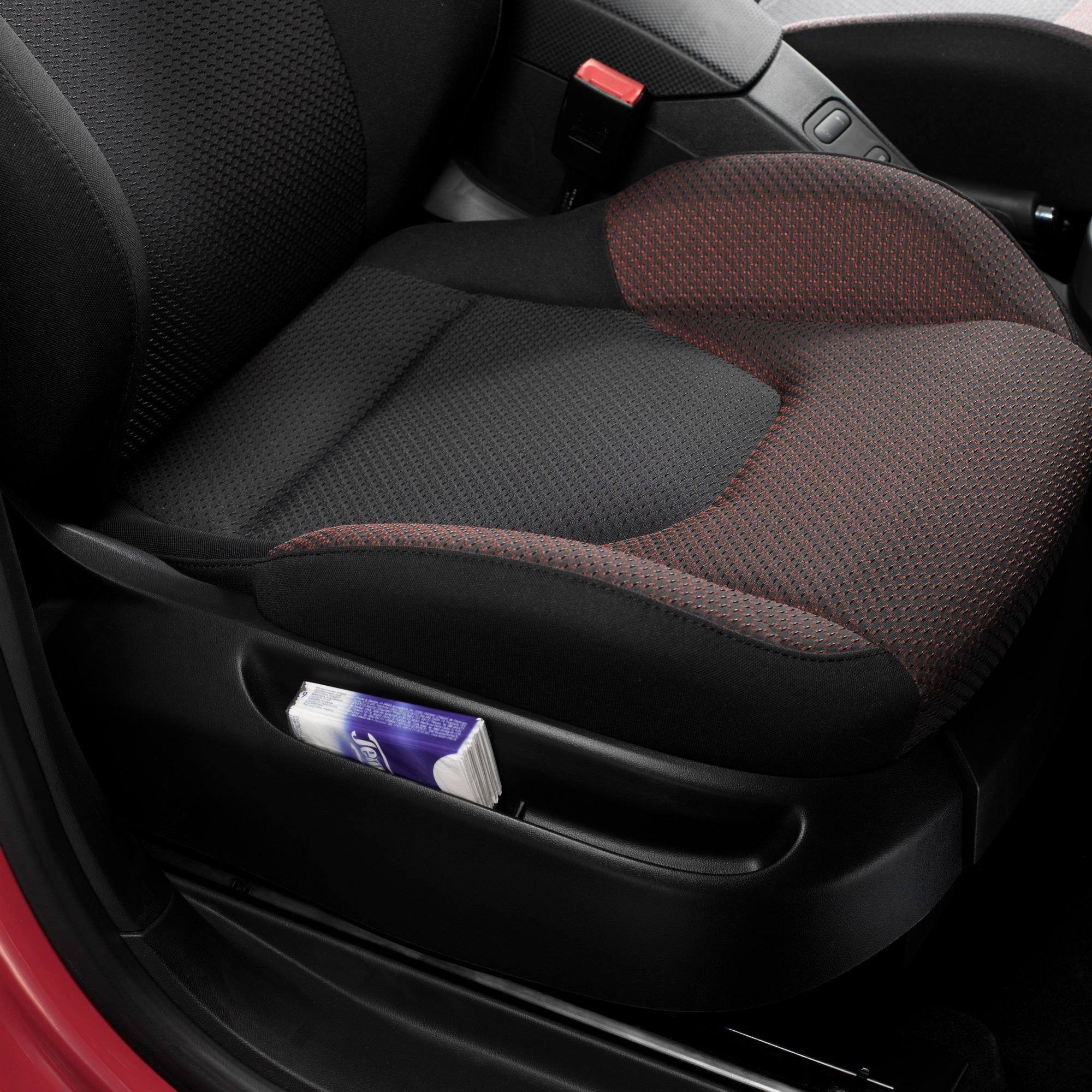
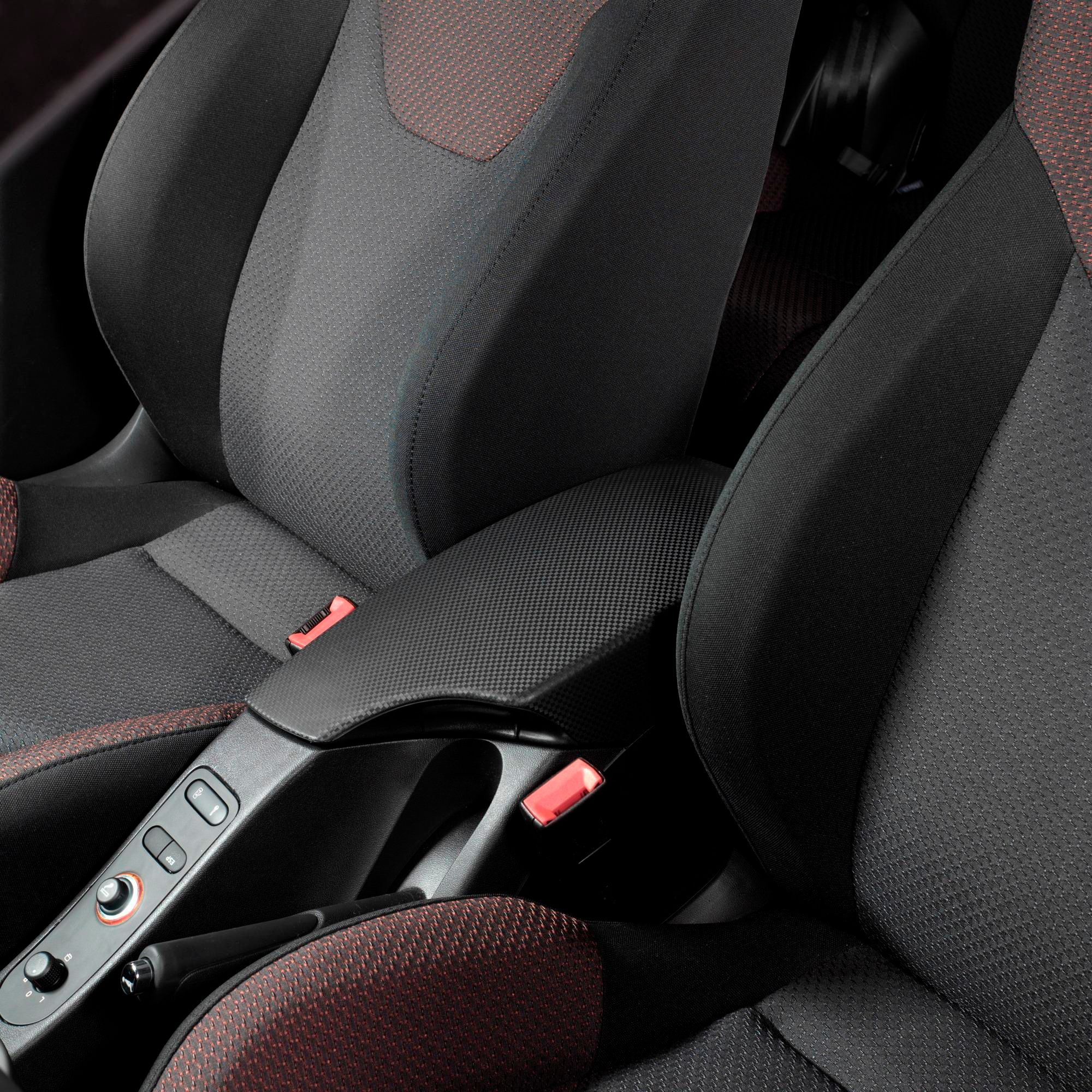
-----
Development
The Altea has been developed with the use of new technologies, modifying the work philosophy with new requirements involving closer collaboration between the company and its suppliers. SEAT has implemented the Simultaneous Engineering concept in all stages of developing and manufacturing the Altea.
Simultaneous engineering
Everyone involved in the Altea's development, from specialised SEAT engineers and technicians to suppliers have worked together in purpose-built facilities at the Martorell Technical Centre. The two floors of the Simultaneous Engineering building provide the necessary backdrop for a revolutionary development concept, where the project can be executed quickly. This form of work makes it easy to pinpoint technical crossroads so they can be analysed, managed and optimised.
This way, different vehicle parts can be redesigned or reinforced where needed, stepping up the pace of development and drastically shortening the time of each phase of the project. The final product is much more competitive, with higher quality results in less time.
Design process
Once defined, the project goes through a process with a completely new twist - a single prototype phase. This is possible thanks to a previous virtual prototype phase which uses simulation techniques such as finite element calculation, virtual reality and digital mock-ups to establish whether the defined solutions are correct and viable. All kinds of experiments are carried out on these virtual prototypes on a computer screen - part behaviour and interaction, how the whole unit performs, rigidity, acoustics, ergonomics, aerodynamics, crash-tests, etc, including pedestrian safety measure development testing.
All kinds of experiments are carried out on these virtual prototypes on a computer screen - part behaviour and interaction, how the whole unit performs, rigidity, acoustics, ergonomics, aerodynamics, crash-tests, etc, including pedestrian safety measure development testing.
When the virtual model is approved, the first physical prototype is built to check the efficiency of the virtual design. Once the product is defined, the first pre-production units are made until the arrival of the definitive production model.
Virtual Factory
A new tool used in some of the production planning process of the Altea is the 'Virtual Factory'. With this system, the complete design of the assembly and installation phases was developed for the Altea's front end unit and cockpit. These elements require a level of precision only obtained by robots equipped with laser measuring devices.
In the Virtual Factory the manufacturing process can be verified interactively at all levels, even before manufacturing begins; product design can be altered, logistics optimised and ergonomics improved, all resulting in improved final product quality.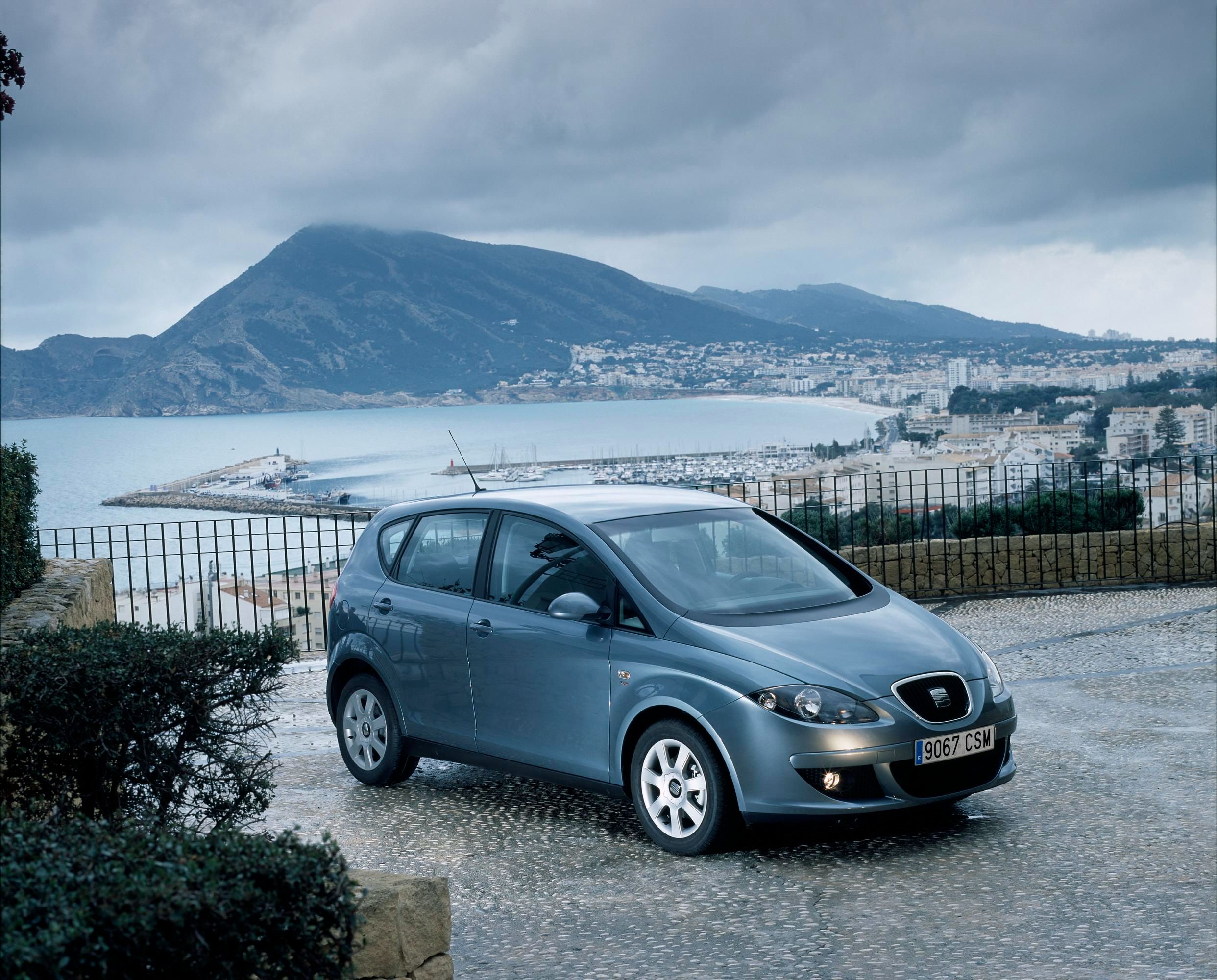 In time, the aim is to simulate the entire factory so it can be surfed in three dimensions from the computer screen.
In time, the aim is to simulate the entire factory so it can be surfed in three dimensions from the computer screen.
Manufacturing quality
All production phases are using new programmes to increase quality, from sheet metal pressing to the new laser part-cutting system that takes photographic measurements with a tolerance level of only ±0.2 mm.
This system is used to weld the front longitudinal body rail. The precise adjustment of the entire front of the car depends on the correct positioning of this part. Once the entire body is assembled, the exact position of the mudguard and bonnet is measured for a perfect adjustment of the front end and bumper in the assembly plant, where a robot aligns the rail by laser, measures it, cuts it and welds it in a single operation.
A brand-new automatic assembly plant for mechanical components has been introduced in the production process of the Altea, where the engine, exhaust pipe and rear multi-link axle are bolted to the chassis using automated electronic tools that apply the precise torque to each bolt. Robots are also used to carry out in-line quality control, measuring basic parameters during the entire production process (rather than periodic or random sampling) at the end of each workstation. The process is so exact that 98% of the vehicles get the green light.
Robots are also used to carry out in-line quality control, measuring basic parameters during the entire production process (rather than periodic or random sampling) at the end of each workstation. The process is so exact that 98% of the vehicles get the green light.
Other control measures have been introduced, such as one that reviews the air-conditioning circuit; a high-pressure jet of air is injected to check there are no leaks before filling the circuit with coolant. The chassis serial number is now engraved automatically using a new indelible, diamond-head engraving technique, and even the headlamp beam is adjusted on the assembly line itself using an automatic facility.
Altea and the environment
An optimised production process and the intelligent use of resources streamline manufacturing and limit pollution. More mechanical efficiency and reduced weight result in lower consumption rates and fewer emissions.
The Altea respects the 7 environmental objectives established by SEAT's Technical Centre and will even be environment friendly at the end of its life-cycle. According to the slogan "Avoid rather than reduce, reduce rather than reuse and reuse rather than recycle", the following aspects have been carefully observed while developing the Altea:
1. Material
2. Production process
3. Recycling
4. Consumption
5. Emissions
6. Soil and water pollution
7. Acoustics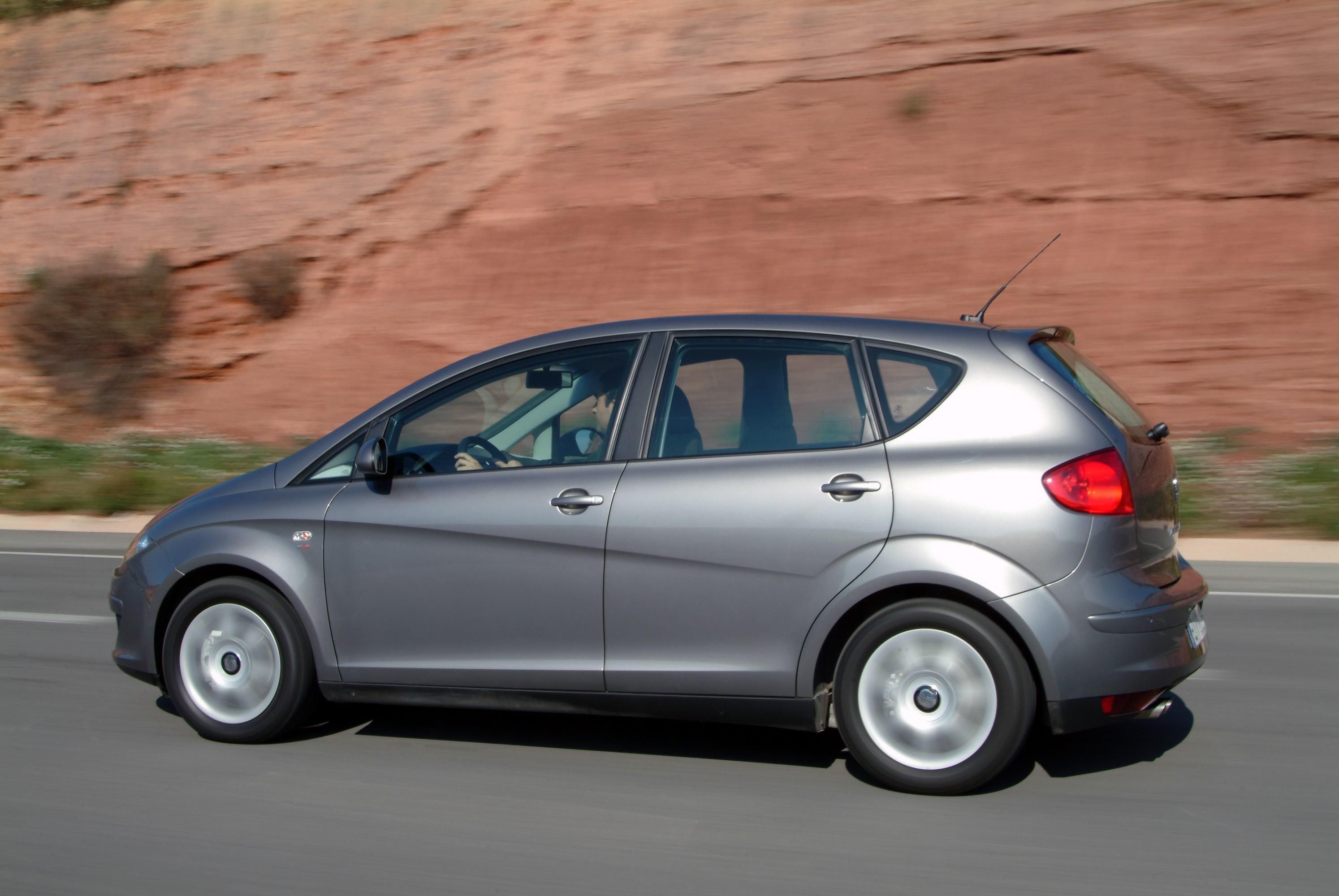 According to future regulations, only 5% of the material of each car can be disposed of as waste material at the end of its life-cycle- The Altea is 85% recyclable, either as recuperated material or reused parts, and a further 10% in the form of recuperated energy comes from the sharp decrease in the amount of heavy material used.
According to future regulations, only 5% of the material of each car can be disposed of as waste material at the end of its life-cycle- The Altea is 85% recyclable, either as recuperated material or reused parts, and a further 10% in the form of recuperated energy comes from the sharp decrease in the amount of heavy material used.
Likewise, PVC is being used less and less, and compared to a traditional chassis, the volume of this material on the Altea is much lower.
Recycling is made easier through easily disassembled parts, material unification and identification labelling.
Weight reduction is achieved through the extensive use of high resistance steel and the perfect finish on laser welded seams, which in turn limits the use of sealants, which are only used in stapled sections. Electric arc welding has also been considerably reduced in favour of resistance-welded seams, resulting in a significant reduction of gas emission in the chassis assembly phase.
-----
BodyWork
The classical concept of a mono-space vehicle is defined as a single-piece vehicle with no aesthetic differentiation between the engine, passenger compartment and boot, and an unbroken transition between the bonnet and windscreen, something successfully achieved on the SEAT Altea thanks to its new windscreen wiper system.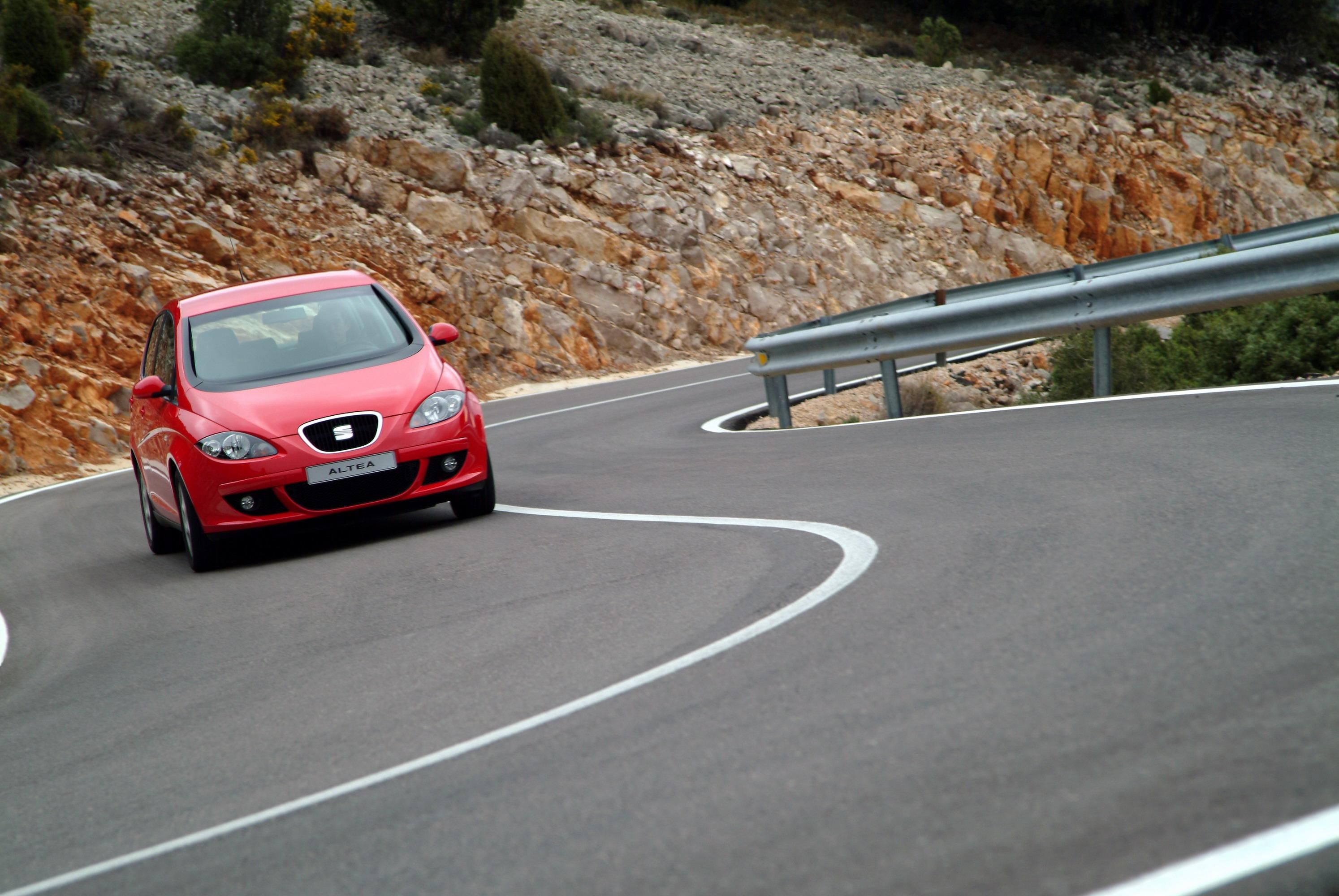 The Altea body is not a simple set of shapes. Its structure has been developed as a safety cell whose architecture directs load-bearing flows in a calculated way. In the event of a collision, the tested deformation zones absorb the maximum amount of energy and provide the highest passenger safety.
The Altea body is not a simple set of shapes. Its structure has been developed as a safety cell whose architecture directs load-bearing flows in a calculated way. In the event of a collision, the tested deformation zones absorb the maximum amount of energy and provide the highest passenger safety.
Three protection rings unite to form an anti-roll arch and main support mechanism of the entire structure. The first ring starts at the windscreen, and continues downward through the A-pillars and forward profile of the doorframe. The second ring joins the central B-pillars with the longitudinal roof reinforcements and the platform sills (conforming a sideways H on each side of the vehicle), and the third includes the C-pillars, the frame of the hatch and the rear crossmember. This sturdy, closed ring is a main characteristic of the new SEAT designs.
Another structural trait is the installation of diagonal reinforcement bars on the doors, in addition to the horizontal bars at the waistline of the body, using high resistance crossmembers. The doors are also filled with solid foam that helps absorb side impacts, improves soundproofing and eliminates vibrations in the car.
High and very high resistance steel
The use of deforming elements on the Altea construction, which absorb impacts and reduce replacement cost, is combined with a highly resistant structure. The design of parts and the choice of materials has led to the creation of a practically undeformable safety cell at the core of the passenger compartment, and a highly rigid chassis that has repercussions on steering precision, noise reduction, durability, etc.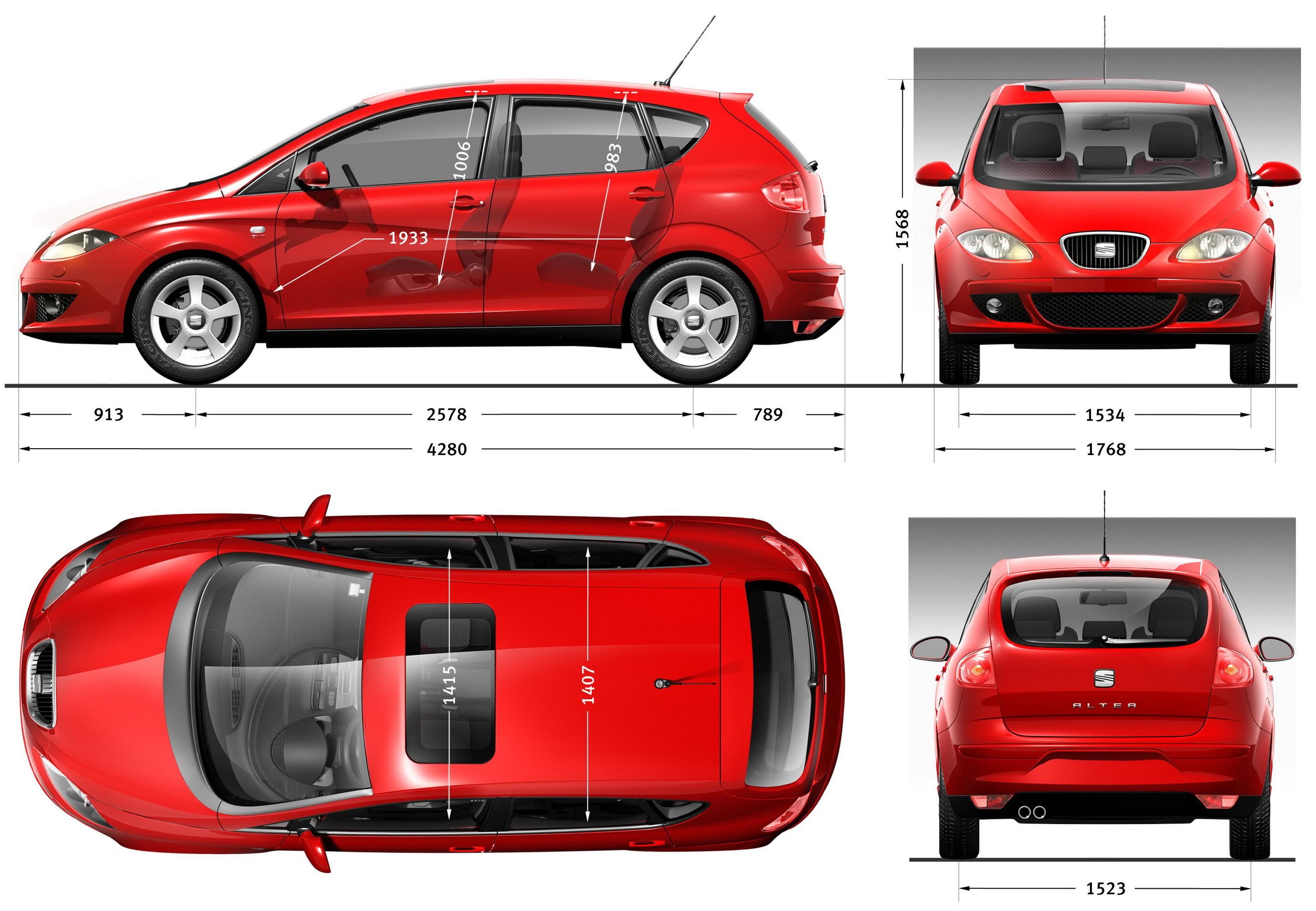 A close look at the different steel grades used to build the Altea body shows that 72% of the structure is made with high and very high resistant steel, and 2% is of extremely high resistance, on the front and rear crossmembers.
A close look at the different steel grades used to build the Altea body shows that 72% of the structure is made with high and very high resistant steel, and 2% is of extremely high resistance, on the front and rear crossmembers.
The level of finish on the surface of the body is exceptional, thanks to the use of laser welding on panel and roof seams to the rear end of the bonnet. There is a total of over five metres of seams on the Altea using this sophisticated technique, which achieves a neater, more precise finish than traditional welding.
Laser welding requires rim joints that are three to four times smaller, improves aesthetics, dynamic rigidity and adds further benefits such as a size reduction of the front pillars.
Rigid comfort
One of the most unique features of the body structure is its rigidity, and the use of soundproofing and impact-absorbing materials on practically all of the panels eliminates vibrations and sagging. One of the key elements is the uninterrupted sill reinforcement, a concept introduced for the first time in the development of a SEAT vehicle. This element is made with rolled rather than stamped metal - which is easier to make and more cost-effective since it can be used at either side of the car - performs exactly in the same way as the traditionally inserted part, and gives the added benefit of a high-quality precision finish.
The degree of static rigidity reaches 20,000 Nm/º (25% more than the normal rate for an equivalent 3-volume vehicle); while dynamic rigidity guarantees smooth driving without annoying vibrations, with a transversal torsion and flexion frequency at 43 Hz and longitudinal flexion at 46 Hz. Such a high value for this frequency greatly improves driving comfort.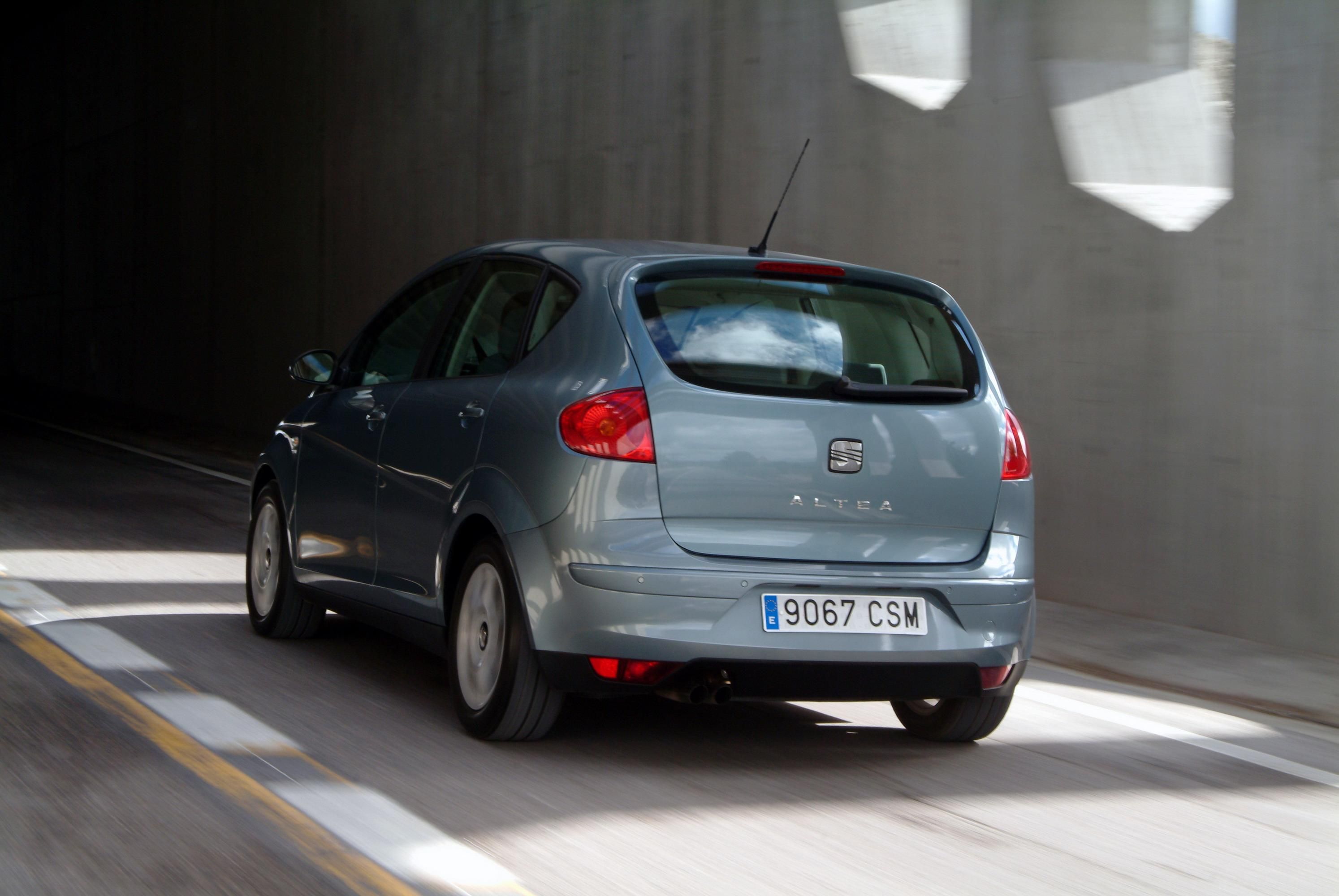 The use of structural adhesives on some of the joints also increases quality on the SEAT Altea. This technique improves efficiency, reduces material stress and lengthens the vehicle's life span.
The use of structural adhesives on some of the joints also increases quality on the SEAT Altea. This technique improves efficiency, reduces material stress and lengthens the vehicle's life span.
The SEAT Altea offers a 2-year warranty and a 12-year perforation rust warranty.
-----
Chassis
Already used on other SEAT range models, the Agile Chassis (DSR) concept is also found on the Altea. This element gives greater control and reacts quickly, greatly enhancing safety.
By reducing the time between driver reaction on the steering wheel and the car's response, the car can be perfectly controlled at all times. The Altea delivers extremely fast steering response and surprisingly little side rocking despite the foreseeable natural tendency on a car with a relatively high chassis.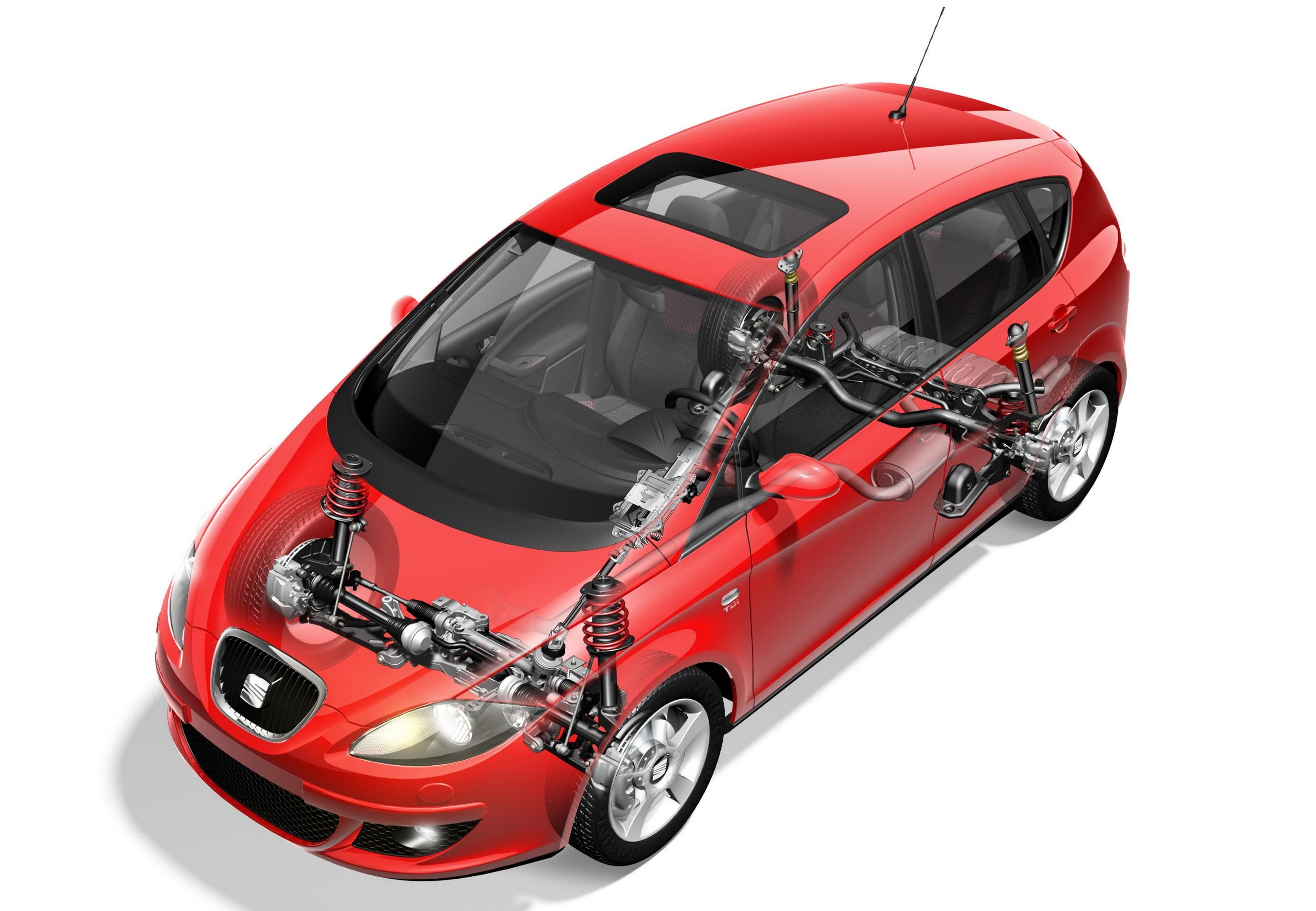 This behaviour is achieved with the combination of coils and shock absorbers, specific tyres with a lower slip angle and variable assistance electro-mechanical steering depending on driving conditions.
This behaviour is achieved with the combination of coils and shock absorbers, specific tyres with a lower slip angle and variable assistance electro-mechanical steering depending on driving conditions.
Evolved suspension
The Altea features a new front suspension with aluminium subframe and a new multi-link rear axle that delivers excellent dynamic performance and driving comfort.
The McPherson front suspension geometry features coil springs arranged at the best working angle and rigid silent-blocks that provide a high level of stability in any situation, from sudden load shifts to braking in curves. The silent-blocks reduce longitudinal strain (braking and accelerating) on the drive shaft and radial transverse strain (rocking).
Among the front wheel drive cars in the SEAT range, the Altea features a novelty on the rear axle - multi-link suspension. Four links (three transverse and one longitudinal) take care of the wheel direction with the efficiency of a double wishbone, with exceptional dynamic qualities. The perfect alignment of these components reduces under-steering and diminishes the slip angle. The chassis was developed using a special virtual prototype, that provided a dynamic simulation of the entire vehicle. Several adjustments were tested to analyse their performance before the final approval. The adjustments defined by theoretical calculations in a real car were applied, and the final suspension ratings were used after subjective measurements were taken with expert test drivers.
The chassis was developed using a special virtual prototype, that provided a dynamic simulation of the entire vehicle. Several adjustments were tested to analyse their performance before the final approval. The adjustments defined by theoretical calculations in a real car were applied, and the final suspension ratings were used after subjective measurements were taken with expert test drivers.
Intelligent electro-mechanical steering
The new electro-mechanical steering system regulates driving conditions at all times. Assistance is provided both when the steering wheel is turned and when it returns to its original position and reduces fuel consumption by up to 0.2 litres for every 100 km.
Adapted to the vehicle's characteristics (weight, reactions), the software decides the level of assistance to apply at all times depending on vehicle and steering wheel turning speed.
Another characteristic of the new steering system is its power assisted return and automatic steering correction on a straight route when there is strong side wind. The system uses the new, corrected 'O' position as a central point, so the driver avoids exerting continuous effort on the steering wheel.
Integrated in the front aluminium subframe, its location dampens the vibrations that are normally transferred to the driver's hands.
Driving adapted brakes
The Altea's braking system features a dual servo-brake that responds efficiently to driver demands. Exerting normal pressure on the pedal produces gradual braking; more energetic pressure (under sportier conditions) produces sharper braking response.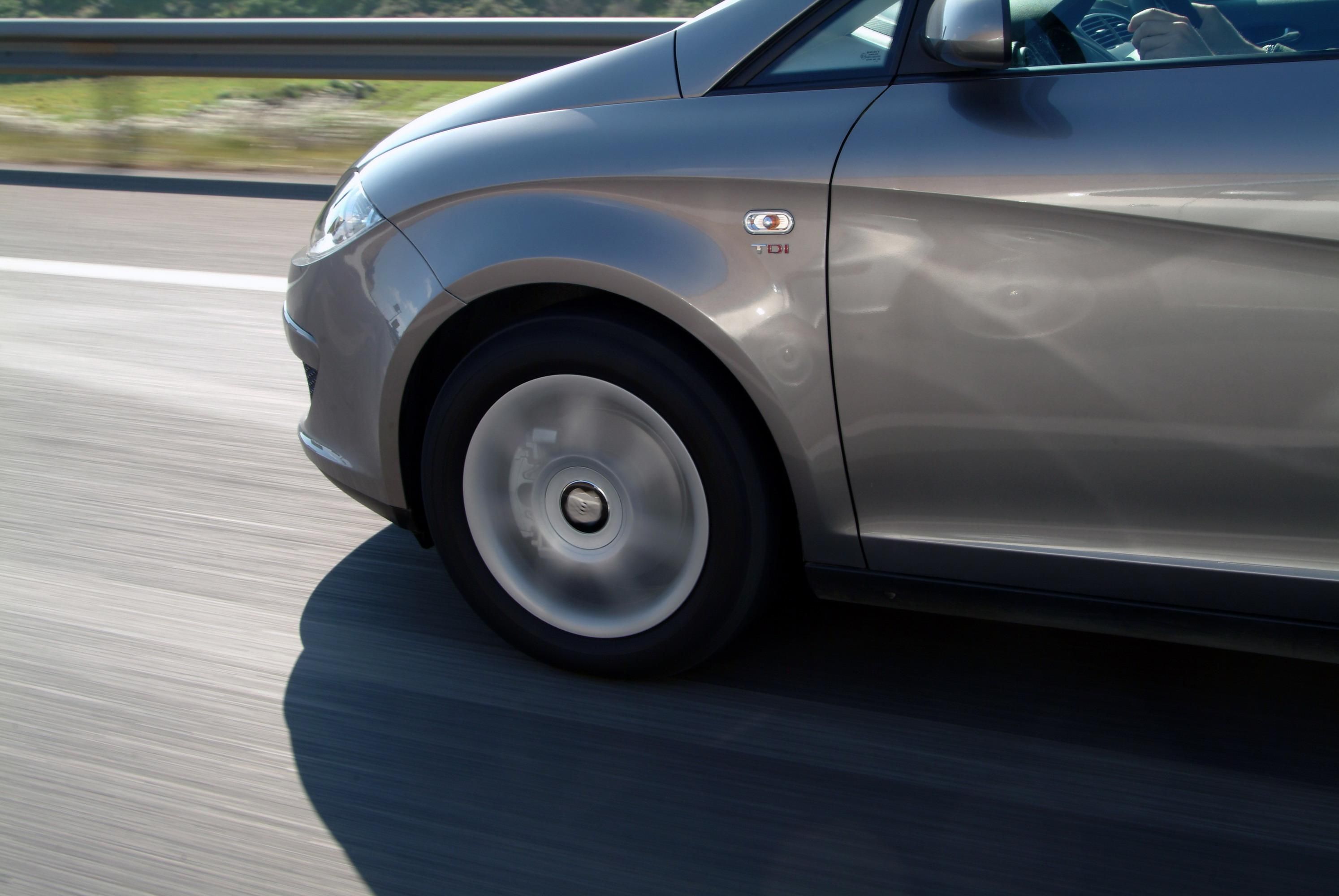 TCS (Traction Control System) is also standard across the entire range. The system performs on the engine management to avoid the wheels from skidding on slippery surfaces.
TCS (Traction Control System) is also standard across the entire range. The system performs on the engine management to avoid the wheels from skidding on slippery surfaces.
The Altea also features latest generation ESP (Electronic Stability Programme)combined with a new programme that detects braking quality on each shaft and performs accordingly. If ABS is activated on the front wheels, the system sends more braking power to the rear wheels in order to take full advantage of braking capacity.
ESP includes EBA (Emergency Brake Assistance), increasing braking pressure to take full advantage of the system's capacity in an emergency situation. The system activates itself when the brake pedal is repeatedly pumped in quick succession.
The electronic stability control system features another novelty. A new function that works when the brake pedal is tapped takes care of limiting the ESP performance potential. This active safety element automatically modulates the braking system in a selective way on each of the wheels to correct spinning.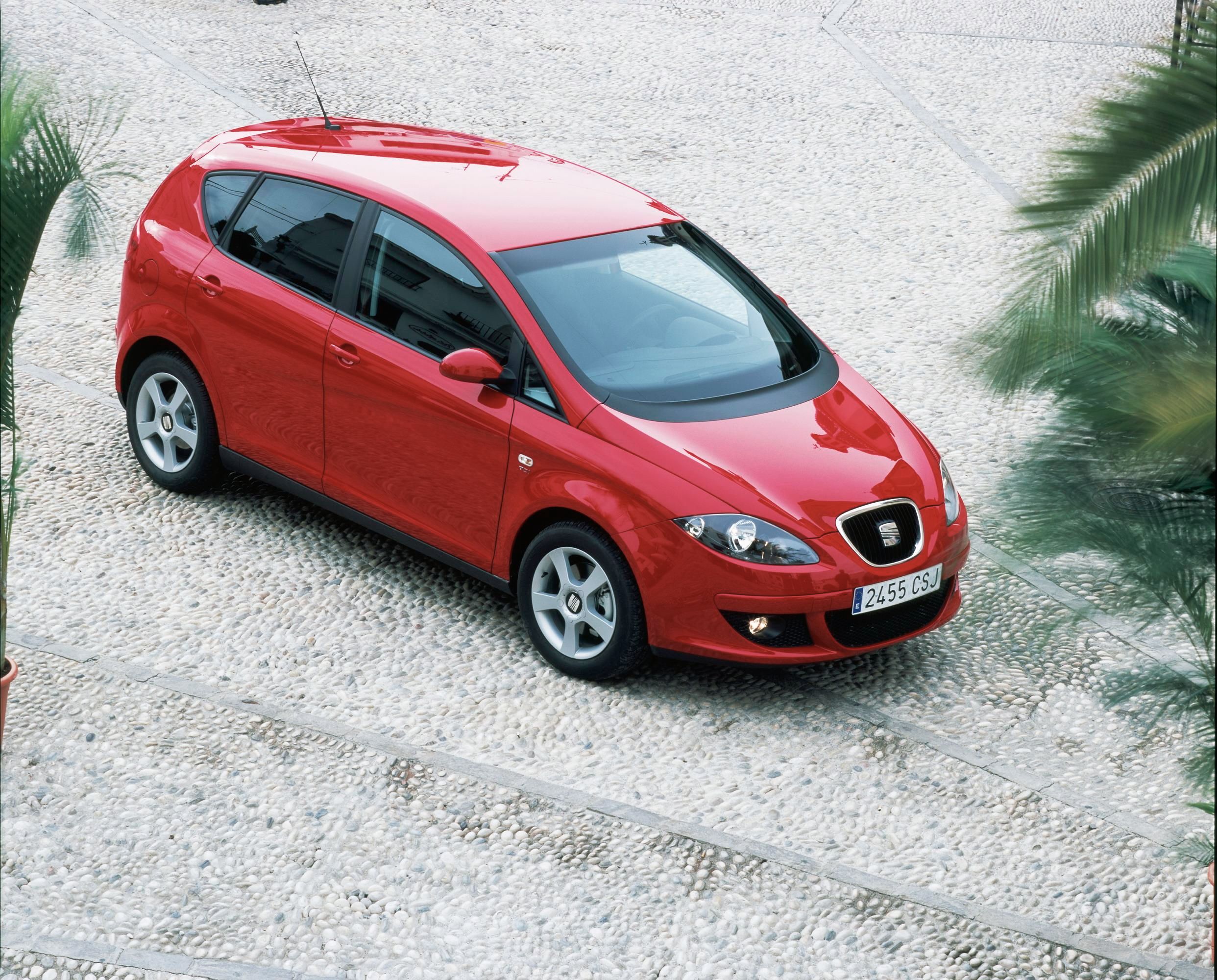 ESP can be disconnected with a switch located on the central tunnel. When disconnected, a warning light appears on the instrument panel. TCS can also be switched off.
ESP can be disconnected with a switch located on the central tunnel. When disconnected, a warning light appears on the instrument panel. TCS can also be switched off.
-----
Engine
The MSV (Multi Sports Vehicle) definition does not only refer to a design-related breakthrough. The dynamic character suggested by each detail on the body is supported by ground-breaking technology in all engine, transmission and chassis aspects.
There are four engines in the Altea range, two petrol and two Diesel. The petrol range includes the 150 hp (110 kW) 2.0 FSI and the 102 hp (75 kW) 1.6, while the diesel range features the 140 hp (103 kW) 2.0 TDI and the 105 hp (77 kW) 1.9 TDI versions.
Petrol engines
150 hp (110 kW) 2.0 FSI. Able to deliver 110 kW output, this engine is a milestone for SEAT. For the first time, the brand features a direct injection petrol sequential engine. Thanks to this technology, the Altea equipped with the 2.0 FSI delivers a combined fuel consumption of 7.7 l/100 km, which is a competitively low figure for an engine with these characteristics.
This engine technology is characterised by the direct injection of the fuel into the cylinder, resulting in a higher compression ratio (11.5:1) and improved engine performance.
It also takes better advantage of the fuel. Since it is injected directly into the cylinders, none remains in the intake manifold on its way to the combustion chamber, and every drop of fuel is transformed into energy.
The mixture is burned quickly and efficiently by reducing the airflow and accelerating the turbulence in the interior of the cylinder, and the special design of the chamber at the head of the piston.
The accelerated speed of combustion results in improved performance and, equally or more importantly, provides improved exhaust gas recirculation thanks to the EGR valve, and a lower rate of NOx. And a longer injection cut-off at low speed before reactivation is just enough to avoid stalling and wasting fuel.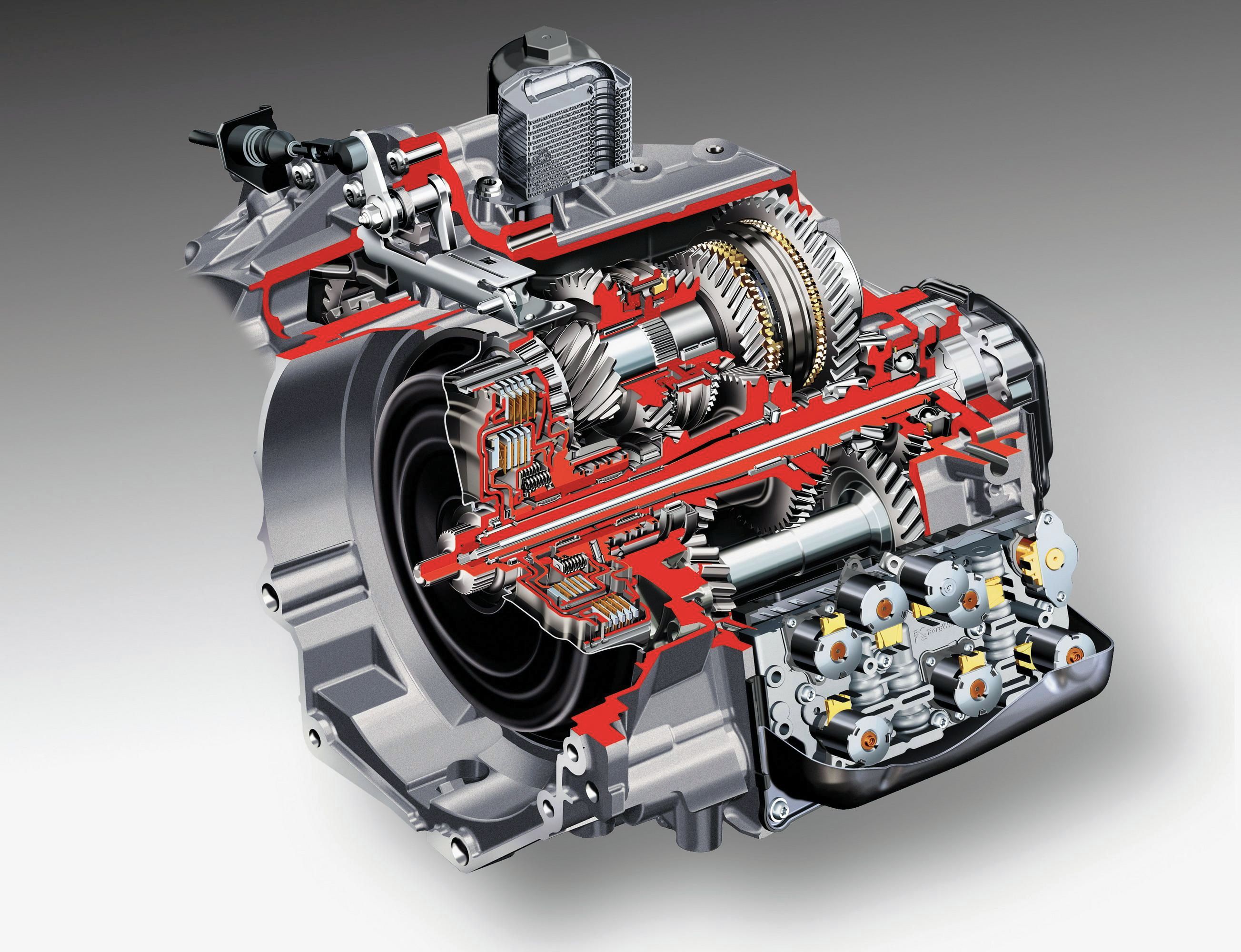 The combination of a variable distribution system and adjustable intake manifold (longer at low speed and shorter at high speed) give excellent performance with higher engine torque across the entire rev range.
The combination of a variable distribution system and adjustable intake manifold (longer at low speed and shorter at high speed) give excellent performance with higher engine torque across the entire rev range.
102 hp (75 kW) 1.6. This four-cylinder in-line engine delivers exceptional performance - 102 hp at 5,600 rpm and maximum engine torque of 148 Nm at 3,800 rpm.
Built entirely of aluminium, the engine block is so light it only weighs 16.5 kg. Thanks to the design of its interior, friction has been reduced on the piston rods, giving better fuel consumption and engine performance. Output is also enhanced by the valve activation mechanism and the new engine management system.
Diesel engines
140 hp (103 kW) 2.0 TDI. This new engine is a technological evolution of the well-known four-cylinder TDI engines. Thanks to a slight cylinder head capacity increase, applying a new cylinder head with four valves per cylinder and pump-injector unit fuelling, it delivers 140 hp output at 4,000 rpm and 320 Nm maximum torque between 1,750 and 2,500 rpm.
The newly designed combustion chamber delivers greater turbine spin and better combustion at low speed, as well as optimised performance in the high rev range thanks to a more efficient cylinder injection.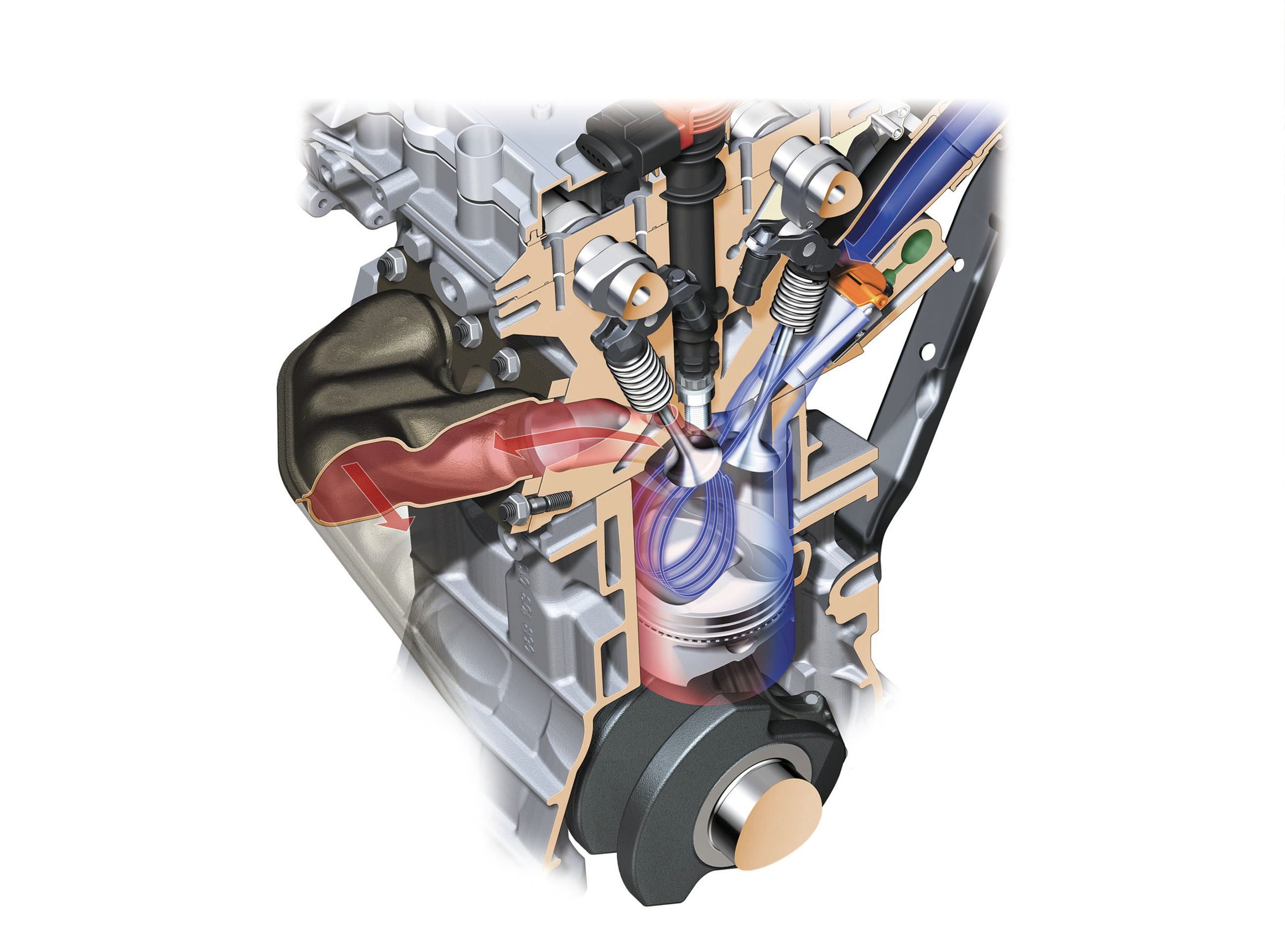 This engine complies with the minimum acceptable emission rates established by the European Union phase IV, giving the Altea a top speed of over 200 km/h and 0 to 100 km/h acceleration in less than 10 seconds. These performance levels are achieved with a fuel consumption of only 4.7 l/100 km on the extra-urban cycle.
This engine complies with the minimum acceptable emission rates established by the European Union phase IV, giving the Altea a top speed of over 200 km/h and 0 to 100 km/h acceleration in less than 10 seconds. These performance levels are achieved with a fuel consumption of only 4.7 l/100 km on the extra-urban cycle.
105 hp (77 kW) 1.9 TDI. This engine is based on the well-known four in-line cylinder 1.9 TDI with pump-injector units, variable turbine geometry and 100 hp output intercooler, which now delivers 5 hp more thanks to its new engine management system.
With the addition of an electric valve for the recirculation of gases with a cooling bypass, and the EOBD (European On Board Diagnosis) system, which controls the components that regulate exhaust emissions, it is also cleaner and more economical.
New, six-speed DSG transmission
Engines with such exceptional performance require equally exceptional gearboxes, with tight, gradual gears that provide quick, agile and carefree driving that takes advantage of the engine's elasticity.
The 1.6 and 1.9 TDI engines are equipped with a five-speed gearbox, while the more powerful FSI and the 140 hp TDI have six gears and a further option - the 2.0 FSI is also available with a six-speed automatic gearbox and the 140 hp 2.0 TDI engine features a new, dual-clutch six-speed DSG gearbox.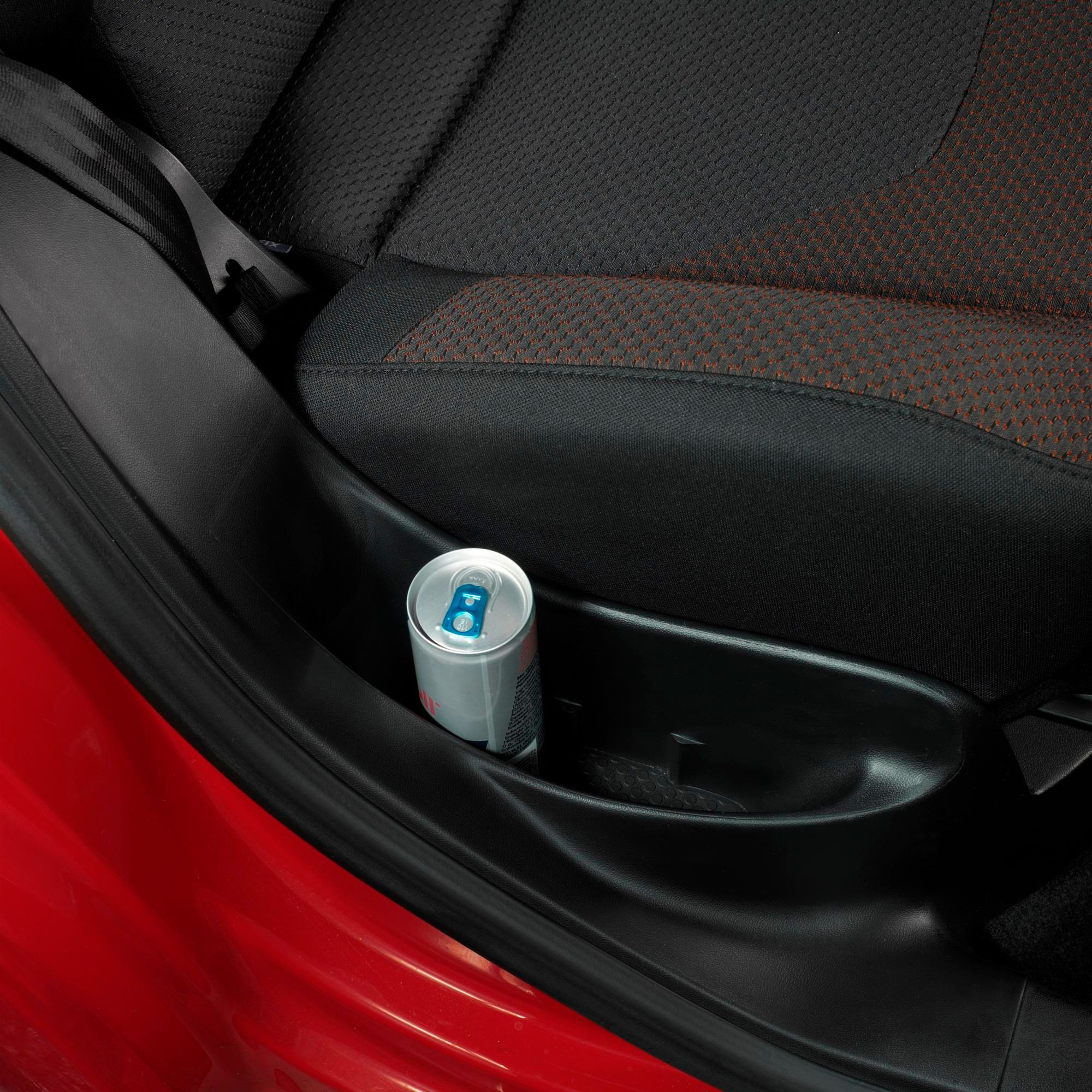 Although to all practical effects the DSG can be considered an automatic gearbox without a clutch pedal, it is actually a combination of two, three-speed gearboxes and two multi-disc clutch mechanisms whose pinions alternate.
Although to all practical effects the DSG can be considered an automatic gearbox without a clutch pedal, it is actually a combination of two, three-speed gearboxes and two multi-disc clutch mechanisms whose pinions alternate.
For example, when the gear has shifted into second and near its rev limit, the second clutch begins to engage the third gear. The transition between both gears is immediate - the first engages the clutch and the second declutches at the same time. Since the changeover is so fast, 0 to 100 km/h acceleration time is faster than on the same 2.0 TDI engine without DSG.
The DSG system provides a more economical fuel consumption rate than a conventional automatic gearbox and increased driving pleasure without any torque or acceleration loss, thanks to the absence of a torque converteR.
-----
Technology
One outstanding element on the SEAT Altea is the windscreen wiper system. First in a SEAT model is a windscreen wiper system that is camouflaged in the A-pillar at both sides of the windscreen in a vertical position, with a top to bottom sweeping motion.
Windscreen wiper system
The large windscreen surface area required a specific wiping system, and a 'butterfly' design proved to be the most adequate from the beginning. It also made it possible to apply the idea put forward on the Salsa concept car, with the wiper blades camouflaged in the windscreen's A-pillars and run by their own electronic motor that synchronises their movement. The unique aspect of this system is its location. When not in use, the wiper blades nestle vertically behind plastic covers at either side of the windscreen. Besides the improved look on the front (which sets the Altea apart), their upright tucked away position is more natural and lends aerodynamic qualities.
The unique aspect of this system is its location. When not in use, the wiper blades nestle vertically behind plastic covers at either side of the windscreen. Besides the improved look on the front (which sets the Altea apart), their upright tucked away position is more natural and lends aerodynamic qualities.
To develop this innovative system, engineers at the SEAT Technical Centre used virtual reality and a wind tunnel to simulate the harshest weather conditions.
The windscreen wiper system on the Altea features the following functions:
- - Windscreen wiper/cleaner synchronisation. The wiping and cleaning functions are synchronised with the sweeping motion and water jet.
- - Droplet elimination. After the water jet sprays the windscreen, the wipers sweep three times. After a short pause, one last sweep eliminates the remaining droplets.
- - Automatic rear wiper activation. When the reverse gear is engages and the front wipers are on.
- - Blocking. The system stops automatically if there is resistance, such as accumulated snow, ice or mud, avoiding possible damage to the wiper blades and the motors.
- - Horizontal stop at intervals. With intelligent dynamic regulation depending on driving speed.
- - Automatic stop. When the bonnet is opened.
- - Service position. The wiper blades stop outside the pillars for easy replacement.
Dual zone air conditioning
The powerful new twin climate control system with dual controls for both driver and passenger adapts itself to the Altea's interior volume. The model offers two levels of air conditioning.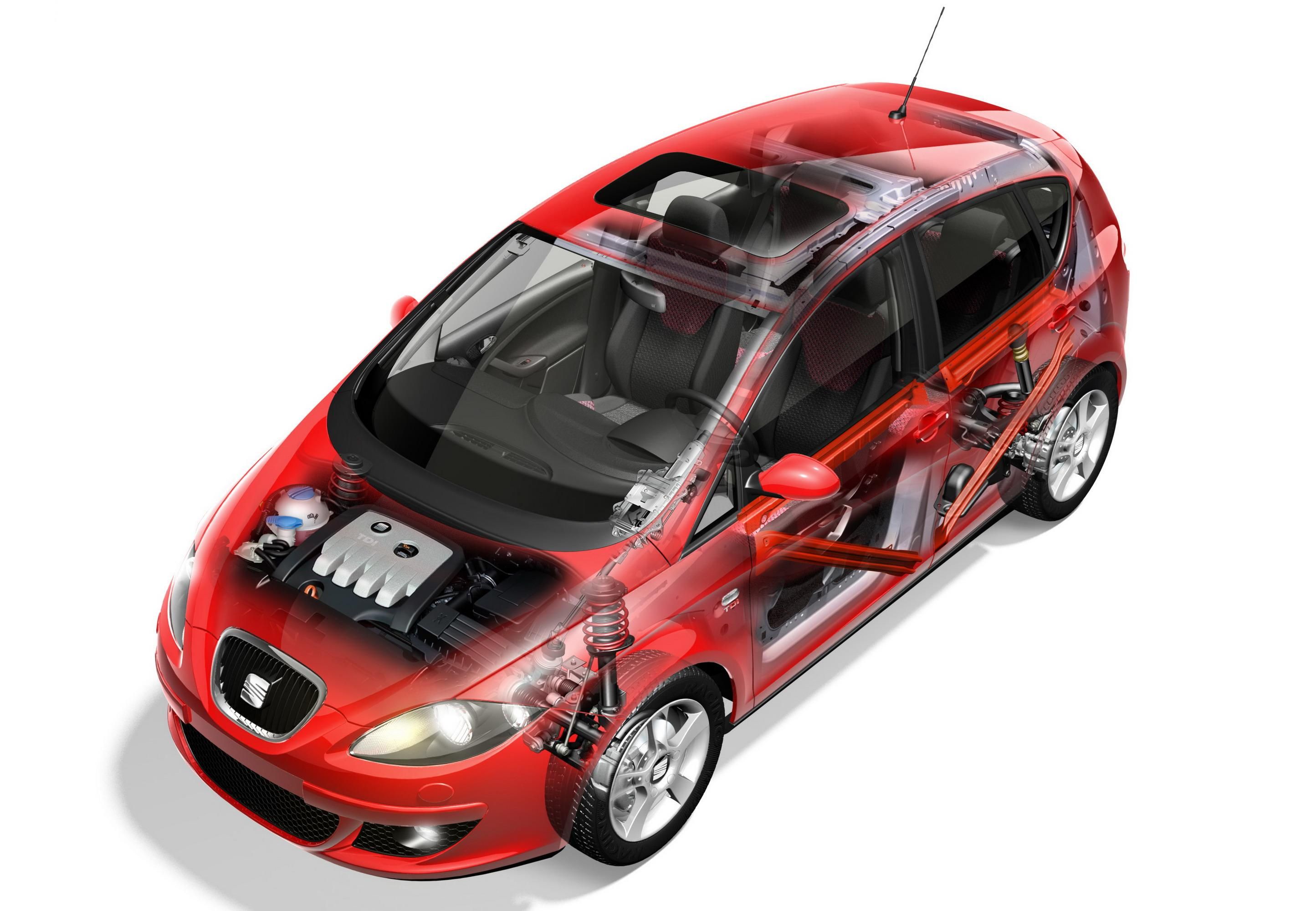 The first is another novelty within the SEAT range, a separate air conditioning system for both driver and passenger, who only have to select the desired temperature, with a difference between both sides of two degrees. The remaining functions are automatic; the controlling sensors and an electronically regulated compressor maintain the chosen temperature in each area.
The first is another novelty within the SEAT range, a separate air conditioning system for both driver and passenger, who only have to select the desired temperature, with a difference between both sides of two degrees. The remaining functions are automatic; the controlling sensors and an electronically regulated compressor maintain the chosen temperature in each area.
The second option is an air conditioning system with electronic temperature control. In this case, both airflow and air vents must be manually selected.
Next to the air conditioning controls are the air recirculation, windscreen de-frosting and heated window functions.
On-board electronics
Technology on the Altea has been simplified by combining functions into control units.
An on-board network terminal activates various functions, such as the delay in turning off the lights. This practical option keeps the lights on a few minutes after the ignition key is removed. This function also turns on the inside lights when the remote control is activated to open the doors.
Other functions are the use of indicator repeaters on the motorway, which only repeat three times when changing lanes; emergency repeaters with automatic disconnection when driving is resumed and when the indicator repeaters are selected (the new indication prevails over the emergency indicators); emergency indicators with an intelligent battery consumption saving function, which reduces battery strain by emitting shorter blinks; and the new burnt light bulb warning on the instrument panel.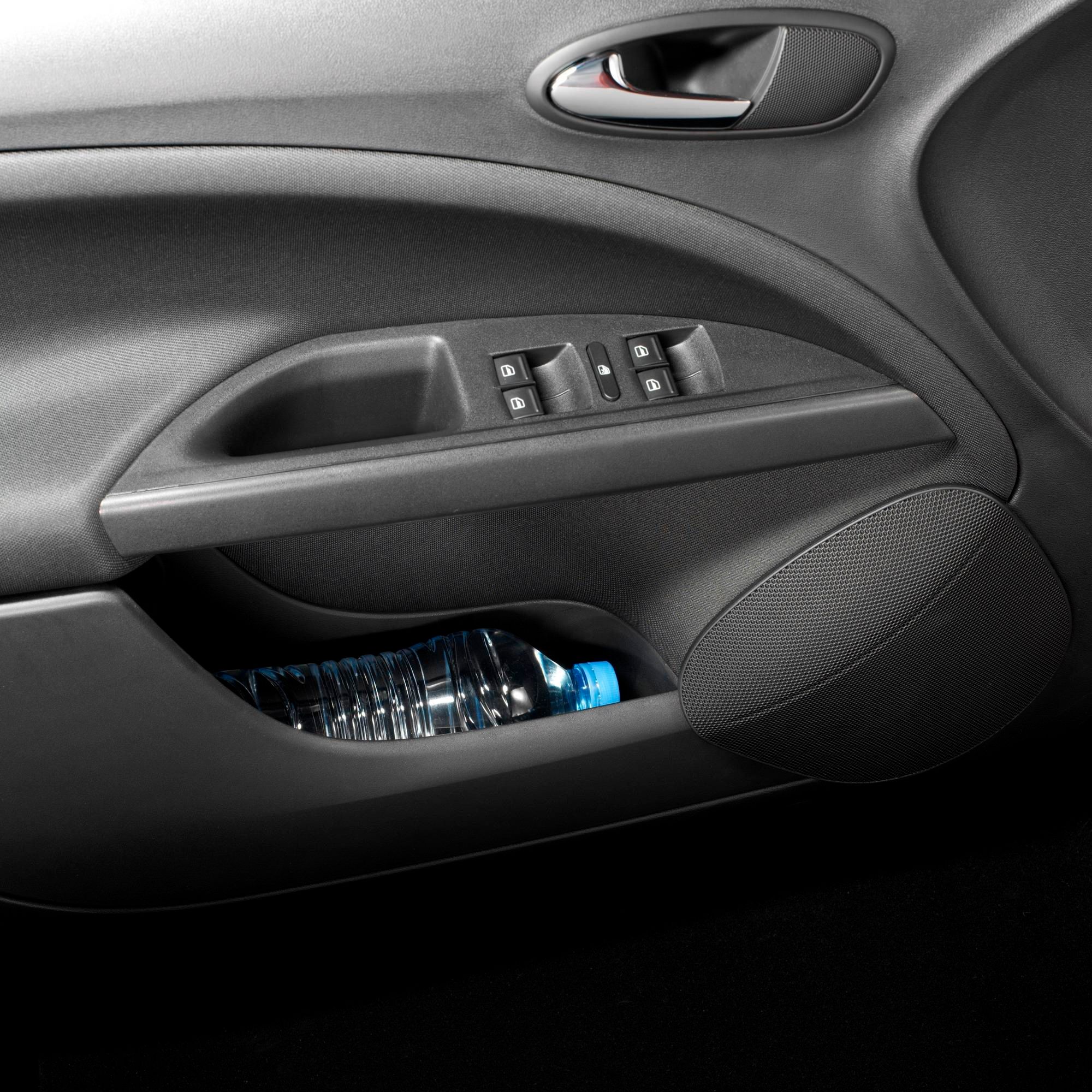 The comfort terminal controls the selective door opening remote control, the automatic door lock (when driving speed reaches 15 km/h), the anti-dazzle rear-view mirror (with night-time dome lights), and the 'Park Pilot' parking aid system that activates proximity sensors located on the rear bumper when reverse gear is selected.
The comfort terminal controls the selective door opening remote control, the automatic door lock (when driving speed reaches 15 km/h), the anti-dazzle rear-view mirror (with night-time dome lights), and the 'Park Pilot' parking aid system that activates proximity sensors located on the rear bumper when reverse gear is selected.
A latest generation immobiliser features new automatic coding criteria in the anti-theft system.
Audio and navigation
The Altea's new, exclusively designed audio system is perfectly integrated in the central console and easy to use.
The audio equipment features a large central screen. Above it is a CD slot and below it are six buttons whose functions are shown on the screen, which vary depending on the audio selection made (radio, CD, CD loader, etc).
The audio equipment can also be controlled using the eight buttons on the steering wheel, four on each side. The audio system features the following possibilities: telephone, six volume adjustment memories, 24 tuned radio station memories, CD loader control, programme type selector (up to 24 options), automatic switching between alternative frequencies, volume depending on driving speed and automatic connection with the traffic channel.
The audio system features the following possibilities: telephone, six volume adjustment memories, 24 tuned radio station memories, CD loader control, programme type selector (up to 24 options), automatic switching between alternative frequencies, volume depending on driving speed and automatic connection with the traffic channel.
The dynamic navigation system is a 6.5 inch colour screen (16:9 format) featuring navigation guidance through on-screen maps or icons and voice messages. The navigator is even able to automatically recalculate driving routes based on traffic information received by the TMC Traffic Message Channel. This component includes audio, radio and CD player and loading equipment, eight speakers, multi-function controls on the steering wheel and telephone pre-installation.
-----
Passive Safety
The SEAT Altea is the brand's first model sold in the European Union equipped as standard with six airbags on all of its versions. The model also features a body designed to resist even the heaviest crashes, with tested 'deformation zones' that gradually direct and absorb the energy from a crash.
Another safety element that warrants special attention is the active footrest. Designed to resist an impact with no variation of its angle, this component greatly reduces the risk of suffering ankle injury. Both the frangible brake pedal and the movement limited clutch pedal move away from the feet in the event of a head-on collision.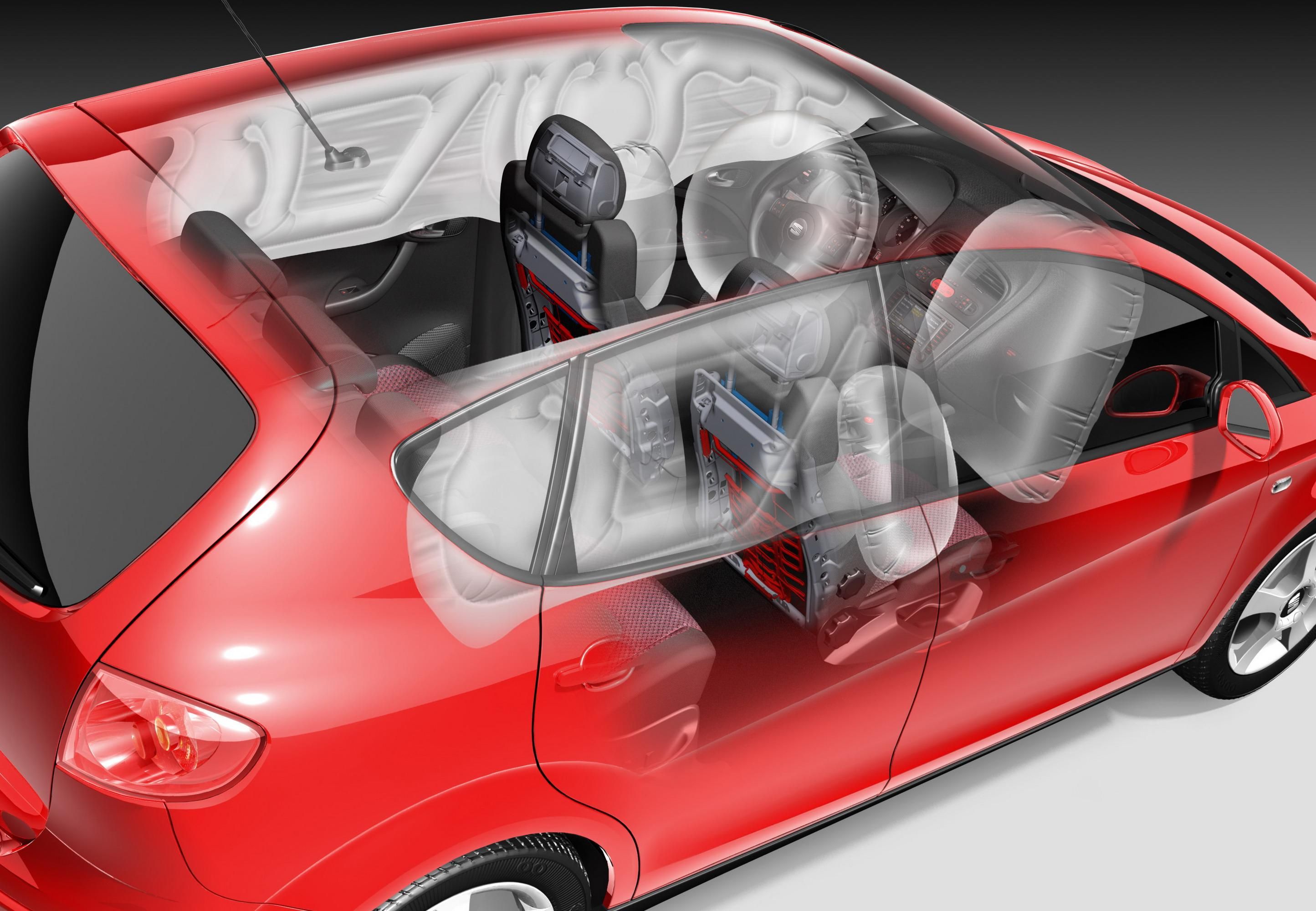 Another SEAT novelty is the way the accelerator pedal is hinged to the floor, which reduces injury to the shins, and the collapsible steering column cannot make its way into the cockpit.
Another SEAT novelty is the way the accelerator pedal is hinged to the floor, which reduces injury to the shins, and the collapsible steering column cannot make its way into the cockpit.
The front seatbelts have a pyrotechnical pre-tensioners and tension limiters, a first on the SEAT range. Its working principle consists of a torque bar on the belt shaft that deforms to limit the belt's tension. The rear seatbelts also feature load limiters.
The low speed collision protection system, with deformation modules designed to absorb the maximum energy the longitudinal body rails can resist, protects important parts of the vehicle such as the engine's cooling system. It also makes it easier to replace damaged parts, which are simply bolted onto the main chassis. Thanks to all of this, the Altea obtained an excellent qualification on the VK-13 (Vollkasko) index after testing by the German insurance company consortium.
Six airbags as standard
All of the Altea units to be sold in the European Union leave the Martorell factory equipped with six airbags - twin front airbags, side airbags and curtain airbags.
The passenger airbag can be disconnected by inserting the ignition key in a lock in the glove compartment and a warning light in front of the passenger seat is displayed. When a baby is travelling in a baby seat on the passenger side, the airbag must be disconnected. When the passenger airbag is disconnected, the driver airbag, side airbags and curtain airbag remain operative.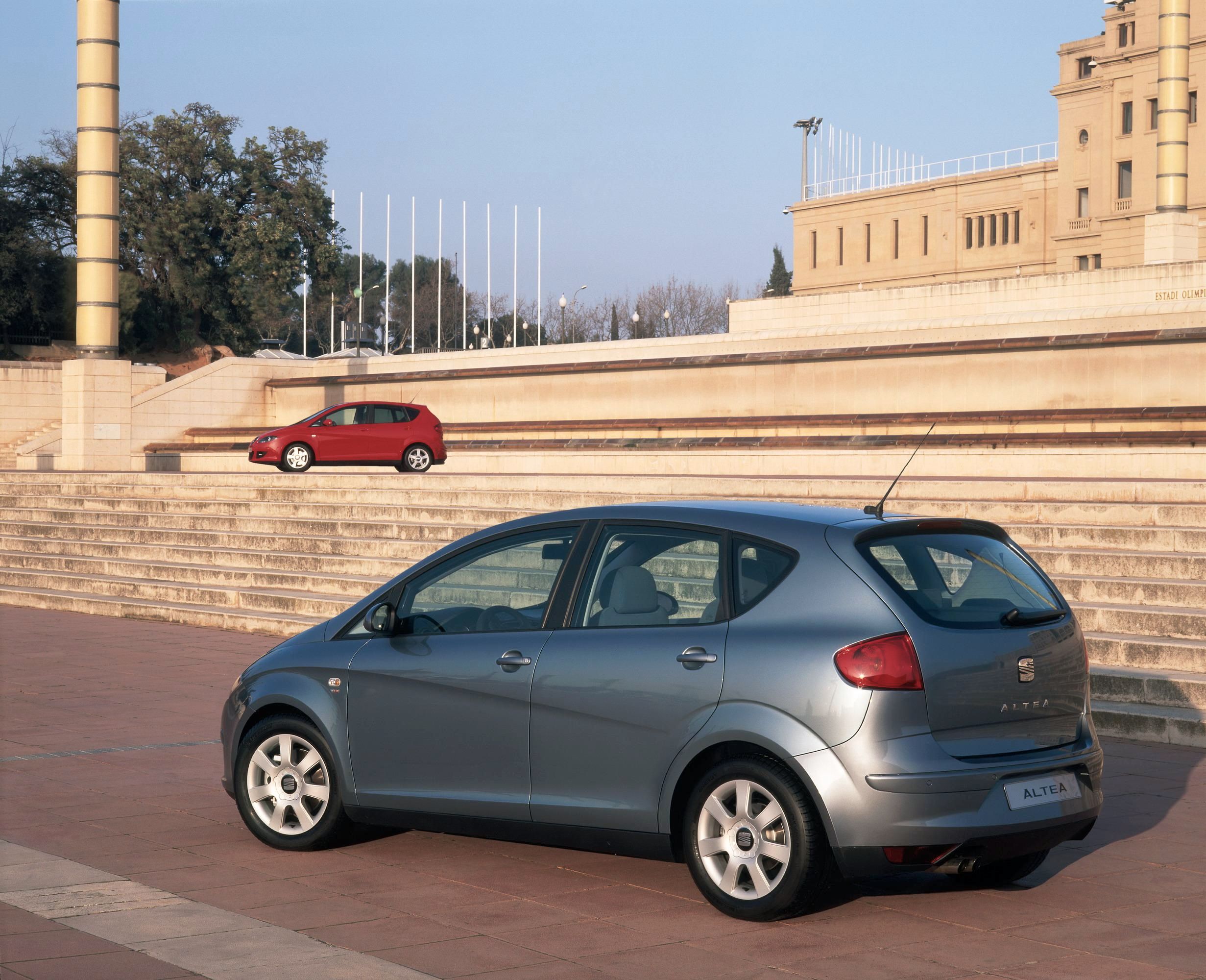 In order to improve response time in the event of a lateral collision, pressure sensors have been installed in the interior of the doors. Combined with the acceleration sensors of the sensor control unit (located in the central tunnel, the safest part of the vehicle), the reaction time of the safety systems has been reduced by 30%. Once the sensor detects an impact and it is confirmed by an acceleration sensor, the airbag inflation system is activated in 7 milliseconds and the side airbag is fully inflated 20 milliseconds later.
In order to improve response time in the event of a lateral collision, pressure sensors have been installed in the interior of the doors. Combined with the acceleration sensors of the sensor control unit (located in the central tunnel, the safest part of the vehicle), the reaction time of the safety systems has been reduced by 30%. Once the sensor detects an impact and it is confirmed by an acceleration sensor, the airbag inflation system is activated in 7 milliseconds and the side airbag is fully inflated 20 milliseconds later.
In the event of a collision, the terminal connects the emergency and courtesy lights, unlocks the doors, cuts off the fuel pump and stops the engine.
Pedestrian safety system
Besides looking after the safety of its occupants, the Altea has built-in systems to protect pedestrians. In the event of a collision, the front end of the vehicle has been developed and designed to minimise injury to pedestrians, paying special attention to the non-aggressive areas and those that deform easily and absorb much of the energy at the front end.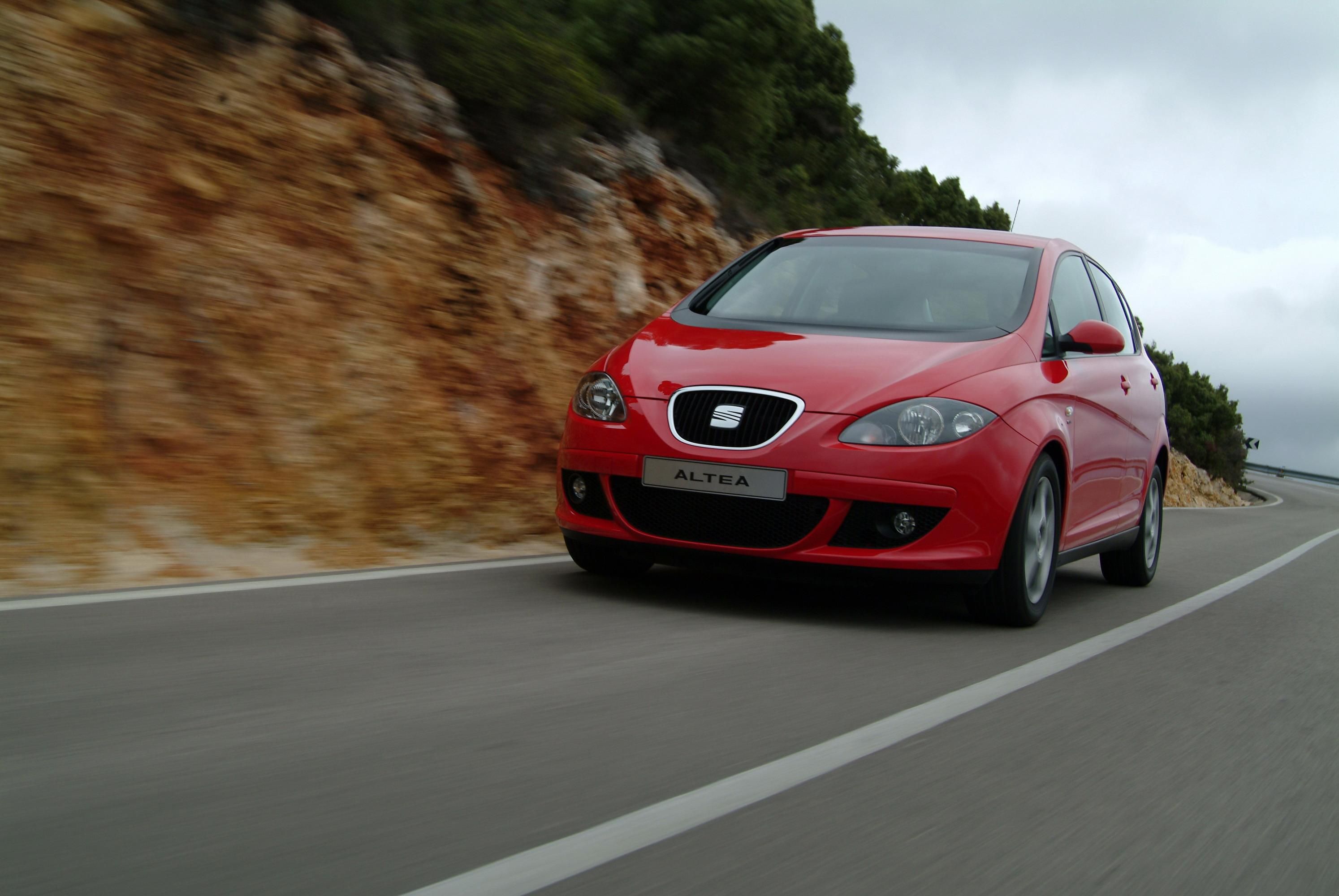 The model features a 'soft' surface on the bonnet and at the lower part of the front end to minimise injury to knees and shins. The protection features also measure up to the high level demands of future pedestrian protection laws.
The model features a 'soft' surface on the bonnet and at the lower part of the front end to minimise injury to knees and shins. The protection features also measure up to the high level demands of future pedestrian protection laws.
-----
Range
Reference, Sport, Stylance and Sport-up, four finish levels that combine with the four engines available for an extensive range.
The entry level Reference finish already features a comprehensive equipment level, including ABS and TCS, twin front airbag, side airbags and curtain airbag, air conditioning, low profile tyres on 16 inch alloy wheels, front power one-touch anti-trap windows, remote controlled central locking and folding key and two-tiered boot, among others. The Sport finish builds on Reference with sportier elements, including stiffer sports suspension, sport seats, specific interior trim, five-spoke 16 inch alloy wheels and leather steering wheel and gearknob.
The Sport finish builds on Reference with sportier elements, including stiffer sports suspension, sport seats, specific interior trim, five-spoke 16 inch alloy wheels and leather steering wheel and gearknob.
The Stylance versions step up the equipment level with luxurious elements such as dual zone climate control, seven-spoke light alloy wheels, leather steering wheel, on-board computer, cruise control, 'Coming Home' function, etc.
Finally, the Sport-up finish is the sportiest, best-equipped Altea version. Building on Stylance equipment, this finish adds the image and sporty character of the Sport versions.
Reference
* 16 inch steel wheels with specific hubcaps
* 205/55 tyres
* Tinted glass
* Roof aerial
* Honeycomb mesh front air vents
* Height adjustable driver seat with lumbar support
* Height and reach adjustable steering wheel
* Folding (60/40) rear seats with adjustable backrest
* Height adjustable headrests on all five seats (tilting front headrests)
* Tinted strip on front windscreen
* Inside door handle glasses storage compartment on driver door
* Front armrest with double storage compartment (one for CD boxes; the other houses the CD loader)
* Drawers beneath front seats
* Storage compartment on all four doors
* Two-tiered rear parcel tray
* Two-tiered boot (with folding partition)
* Ring fasteners and luggage net
* Straps to secure an umbrella at the base of rear seats
* Front power windows (with 'one touch' function and anti-trap system)
* Instrument panel with rev counter
* Driver and passenger reading light with delay setting
* Boot light
* Rear courtesy lights with delay setting
* Electrically adjustable headlamps
* Two 12-volt sockets (on central tunnel and in the rear)
* Radio CD player with six speakers
* Air conditioning
* Twin front airbag
* Glove compartment lock for passenger airbag disconnection
* Side airbags
* Curtain airbag
* All-round seatbelts with three-point anchoring and tension limiter (front seatbelts with pyrotechnical pre-tensioner)
* Isofix system for child seats
* ABS and TCS (with disconnection)
* Electro-mechanical power steering
* Remote controlled central locking and folding key
* Selective door opening
* Puncture repair kit
Sport
This finish builds on Reference with:
* Five-spoke 16 inch light alloy wheels
* Sports suspension
* Sports seats with Sport upholstery
* Specific interior trim
* Leather steering wheel
* Leather gearknob
Stylance
This finish builds on Reference with:
* Body colour door handles and mirrors
* Seven-spoke 16 inch light alloy wheels
* Dual zone air conditioning
* Foglamps
* Specific upholstery
* Leather steering wheel
* Leather gearknob
* Rear power anti-trap windows
* Electrically adjustable and folding door mirrors
* On-board computer
* Cruise control
* Two-tone horn
* 'Coming Home' function
Sport-up
This finish builds on Stylance with:
* Five-spoke 16 inch light alloy wheels
* Sports suspension
* Sports seats with Sport upholstery
* Specific interior trim  Optional equipment
Optional equipment
Depending on the finish level, the comprehensive standard equipment list can be completed with a wide choice of optional elements.
Audio:
* Radio CD player with 8 speakers and steering wheel controls
* CD loader
* Telephone pre-installation
Utility:
* Dynamic navigation system with 6.5 inch high resolution colour screen
* Cruise control
* Rear parking aid sensors
Fresh air:
* Dual zone air conditioning
* Electric anti-trap sunroof
Comfort:
* Rear power one-touch anti-trap windows
* Electrically adjustable and folding door mirrors
* Height adjustable passenger seat with lumbar support
* Winter package
* Heated seats
* Trailer hitch pre-installation and 12 volt socket in boot
* Smoker's package (ashtray and lighter)
Safety:
* Volumetric alarm
* Foglamps
* ESP with EBA
* Anti-dazzle rear view mirror with dome light
Style:
* Metallic paint
* Seven-spoke 16 inch alloy wheels
* Five-spoke 17 inch alloy wheels
* Leather upholstery
Functional:
* Full size spare wheel
* Spacesaver spare wheel
Body paint and interior colours
The Altea is available in a range of 13 colours, three solid colours starring Emoción red and ten metallic hues, featuring the new Tinta black, Mar blue, Lluvia blue and Fresco green. These colours combine with specific upholstery levels for each finish. There are two combinations in grey, one for the Reference versions and another for Stylance; one combination of blue tones for the Costa interior, only available with Stylance and selected exterior colours; leather upholstery available with all Stylance colours and a special black and red combination, exclusively available on Sport and Sport-up and eight colour options.
These colours combine with specific upholstery levels for each finish. There are two combinations in grey, one for the Reference versions and another for Stylance; one combination of blue tones for the Costa interior, only available with Stylance and selected exterior colours; leather upholstery available with all Stylance colours and a special black and red combination, exclusively available on Sport and Sport-up and eight colour options.

